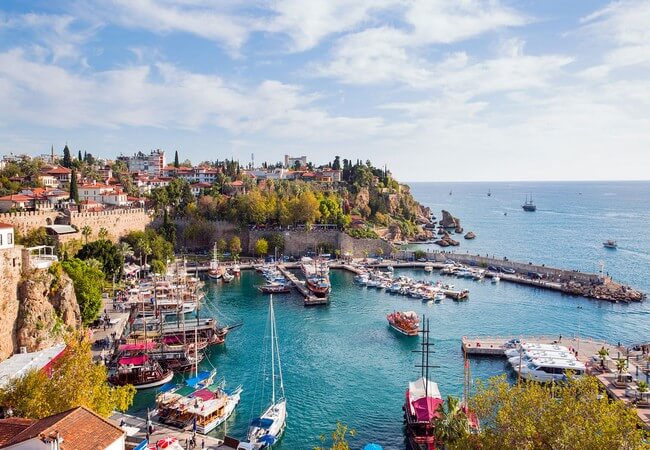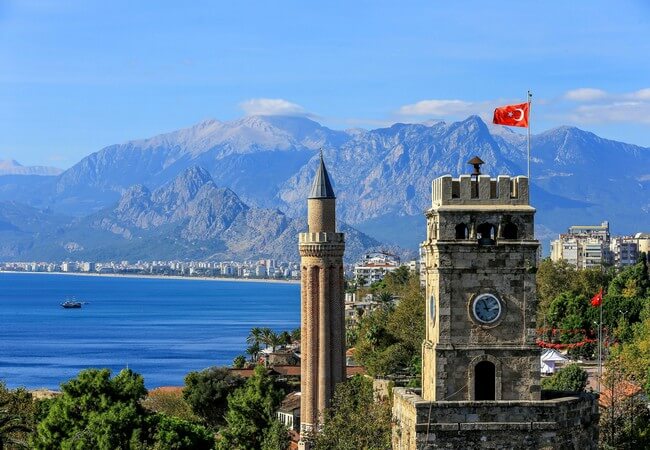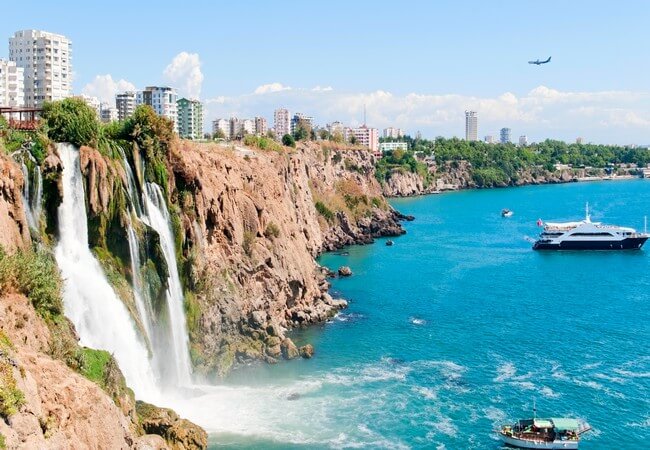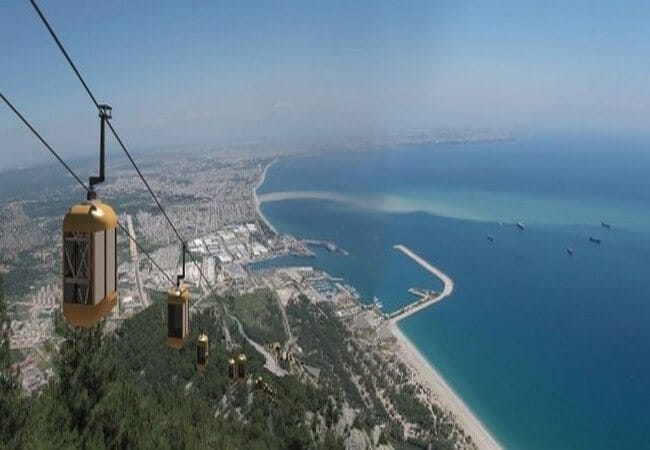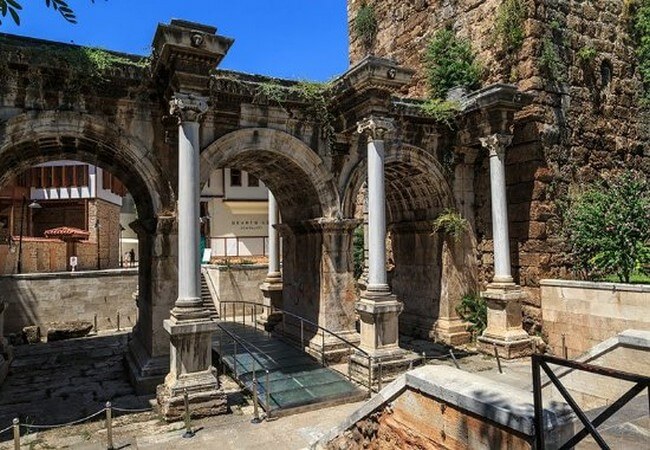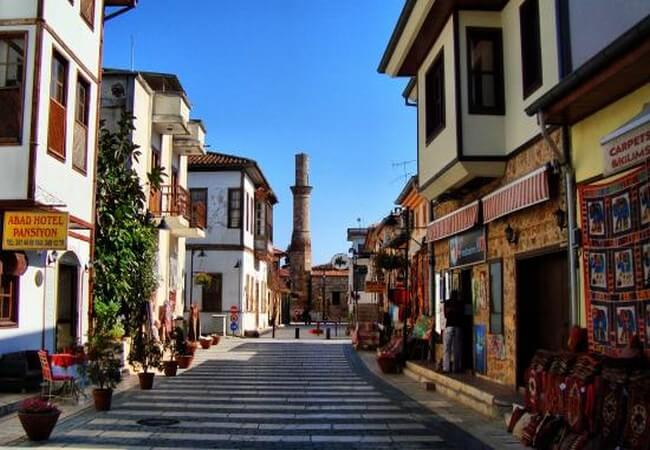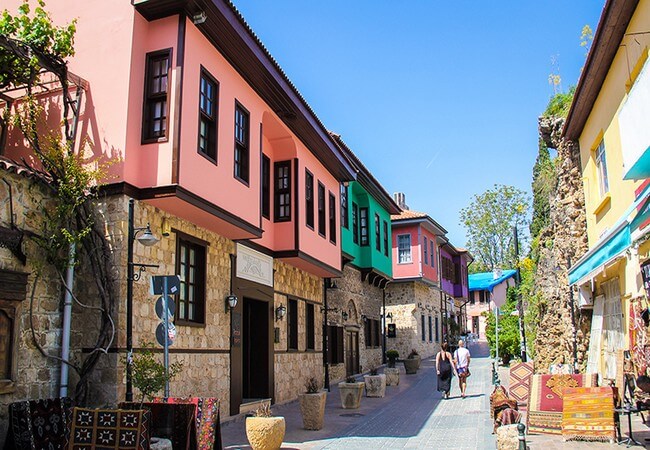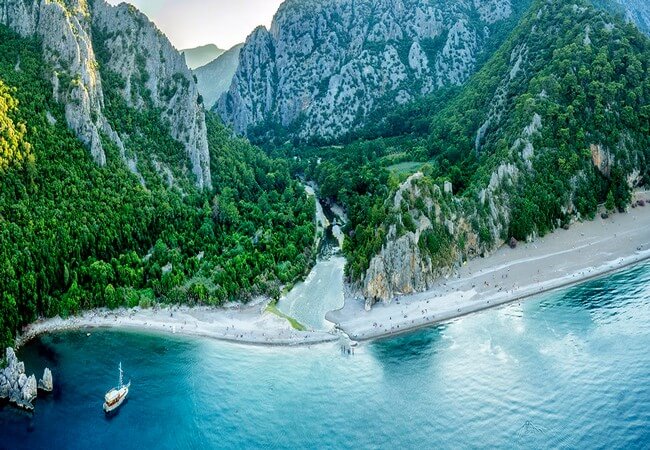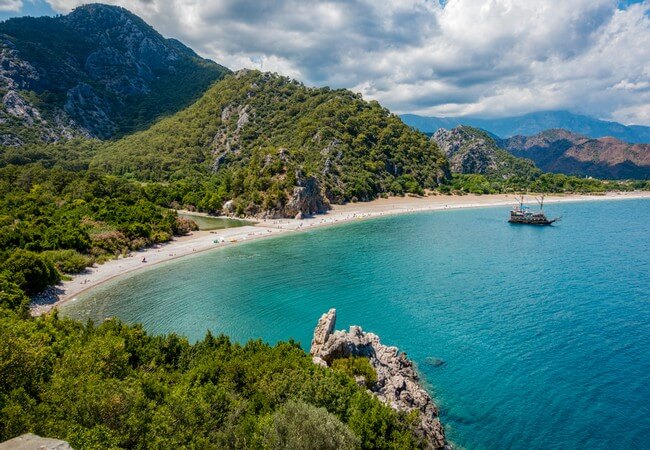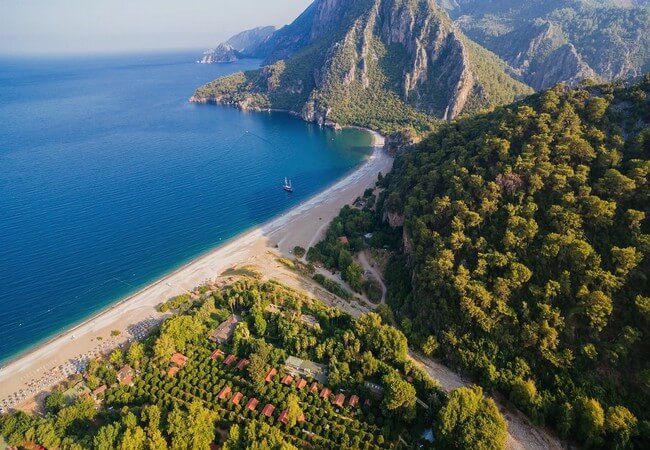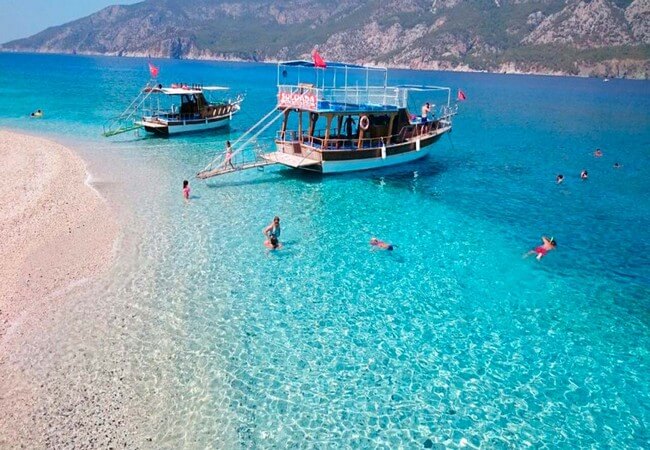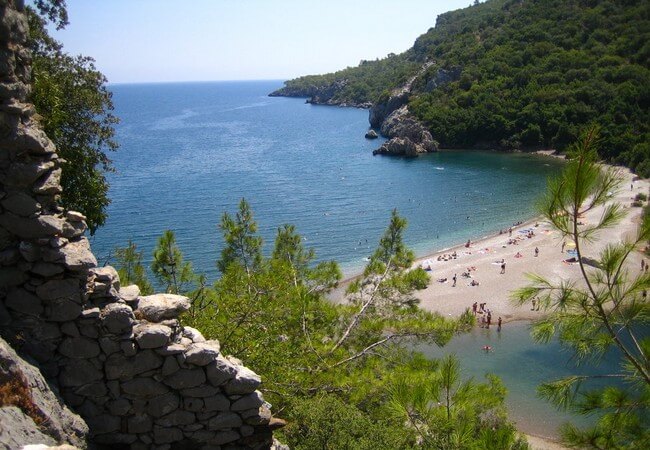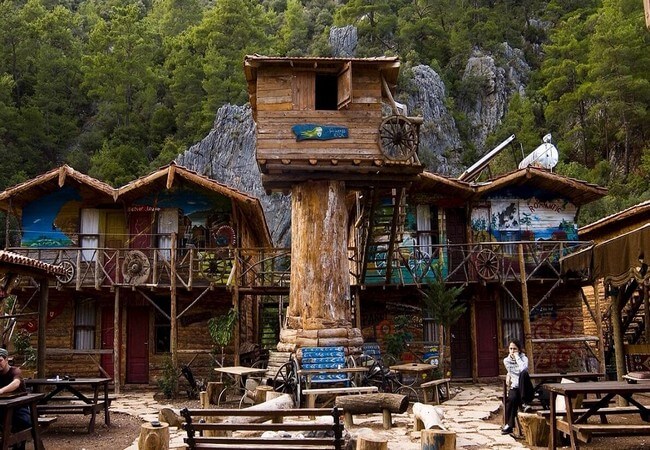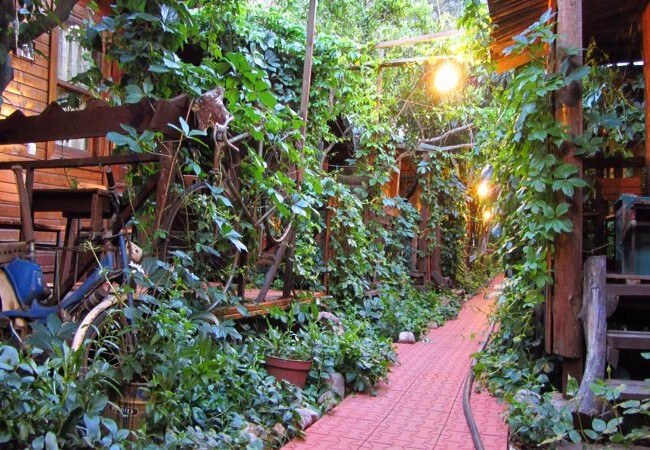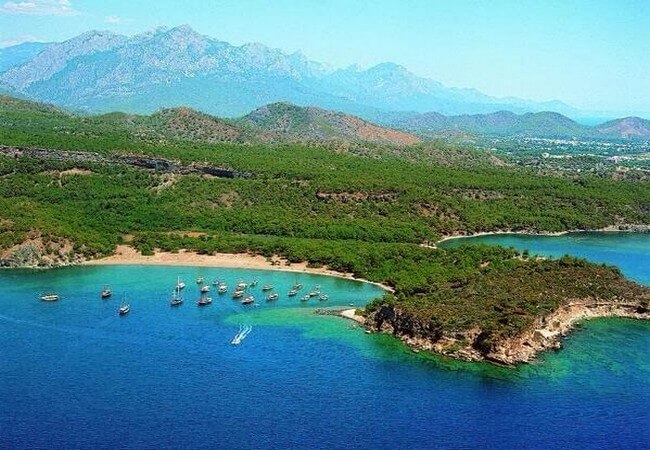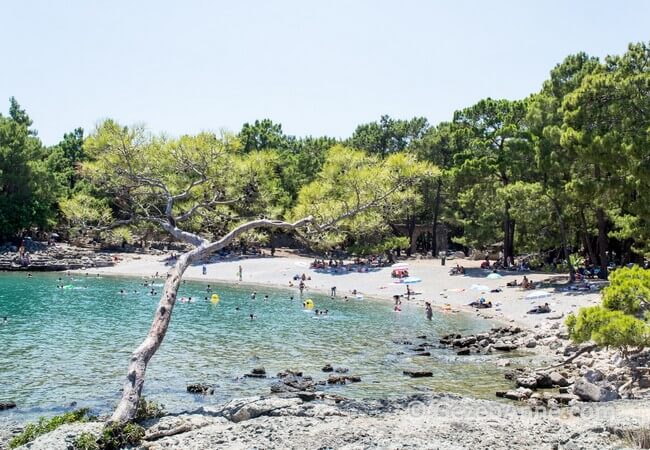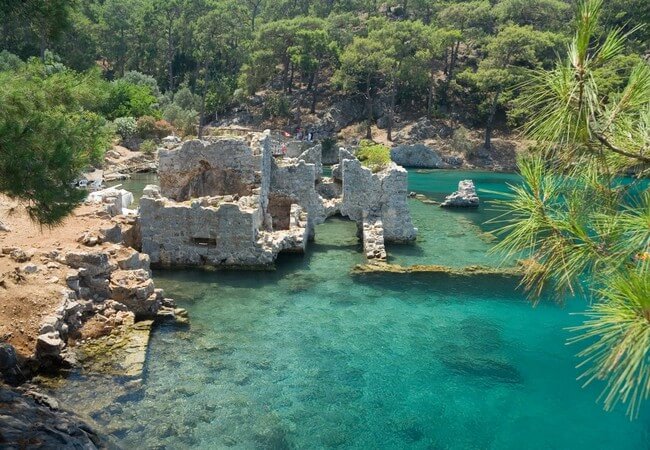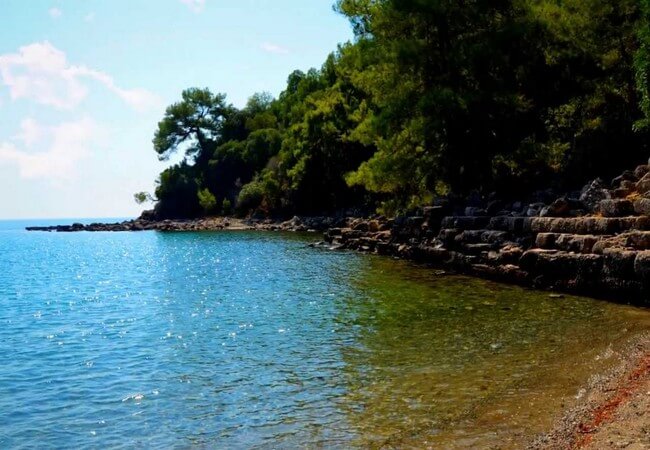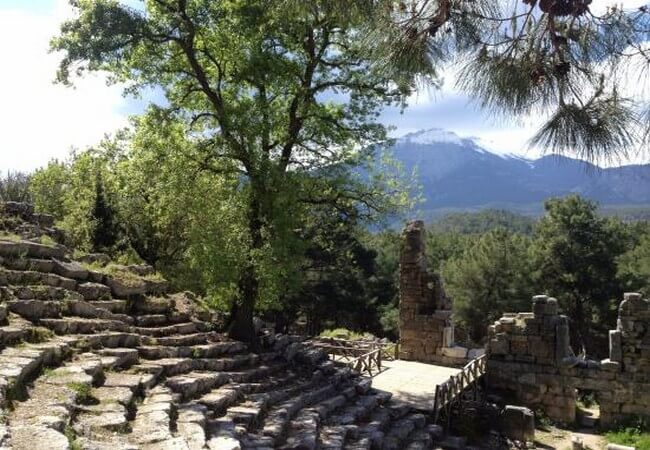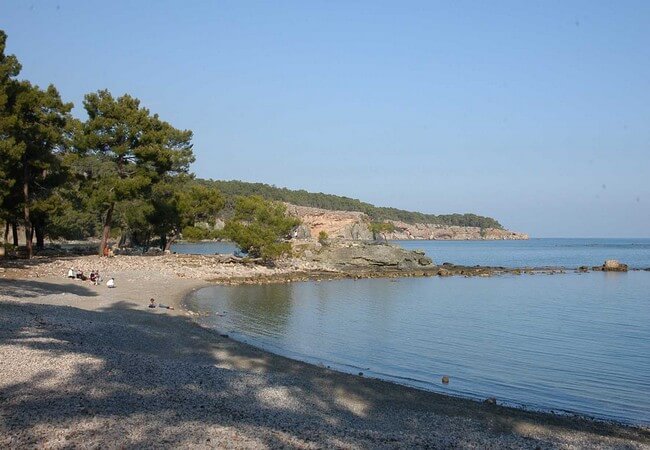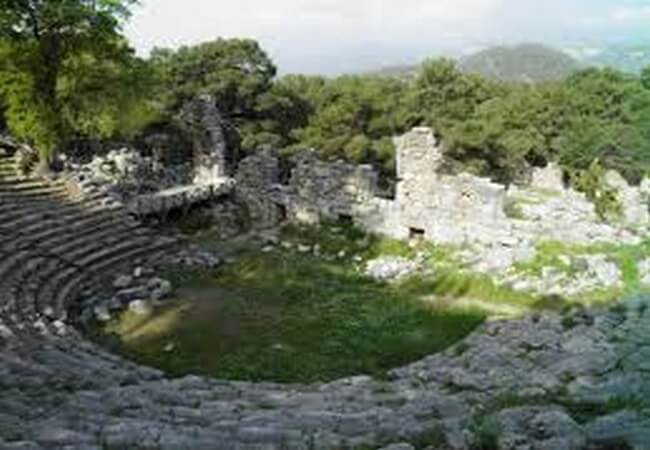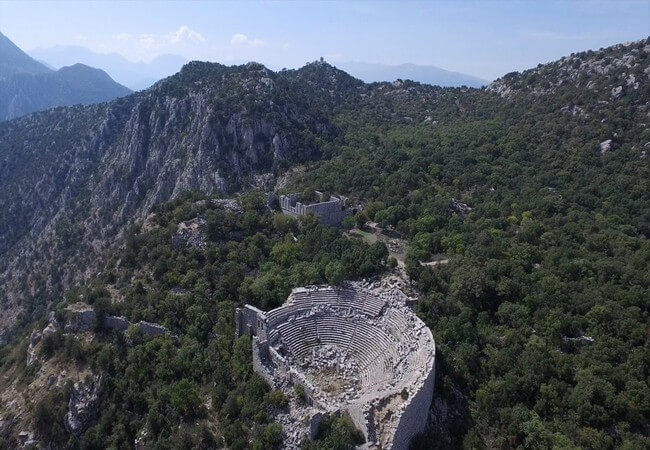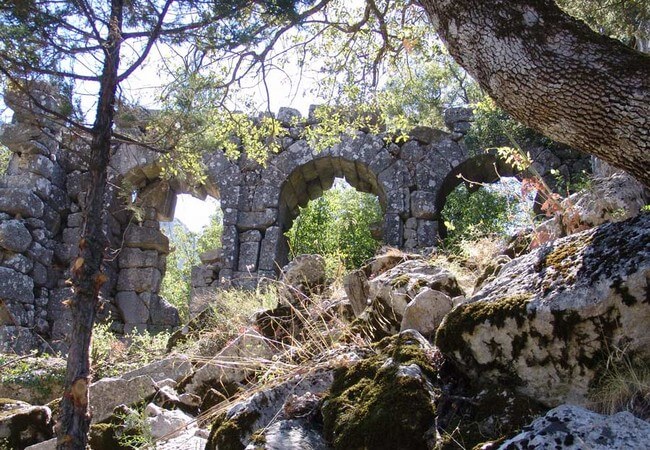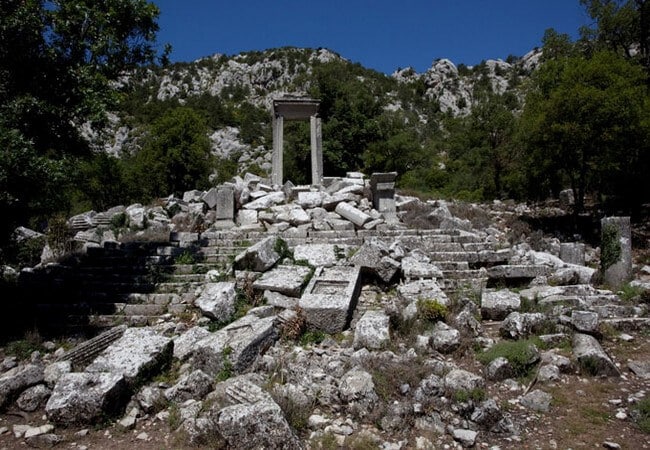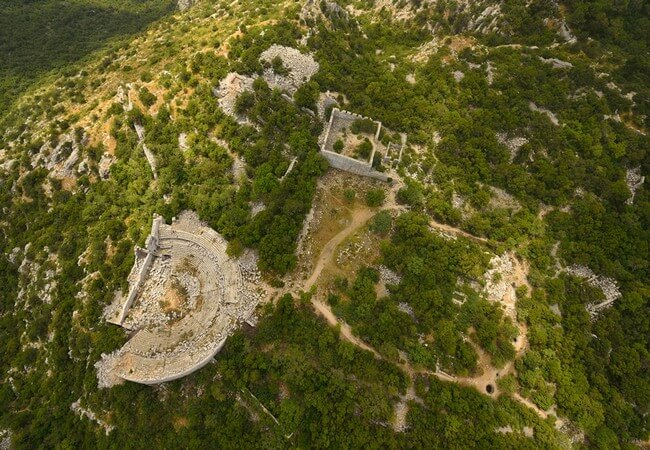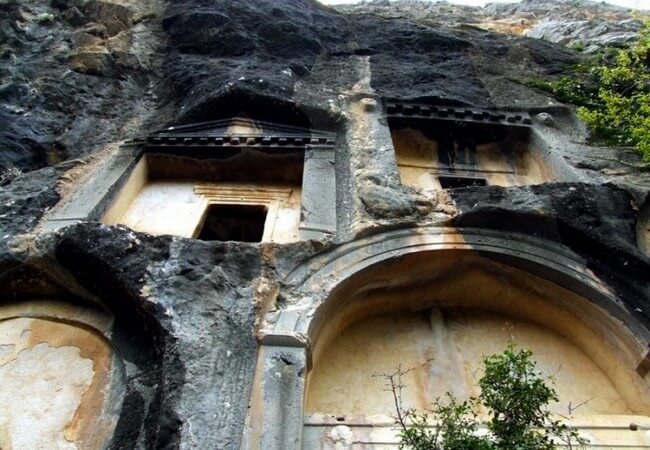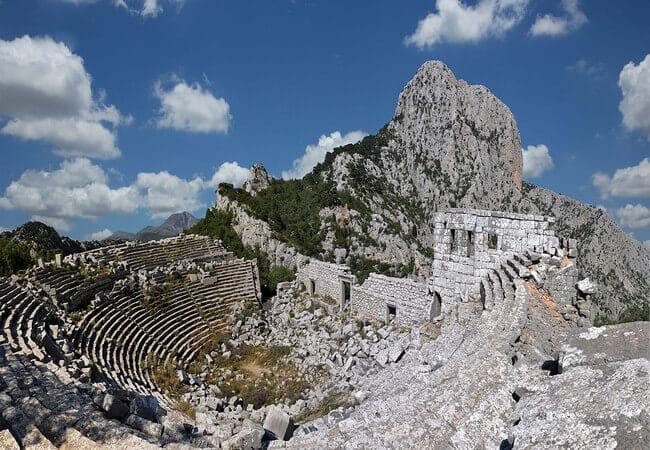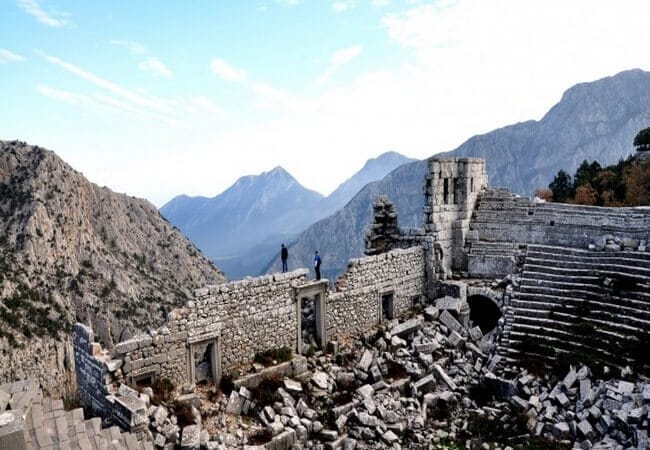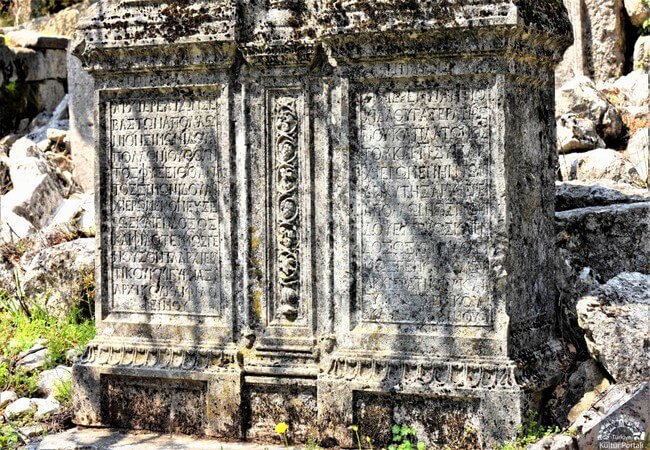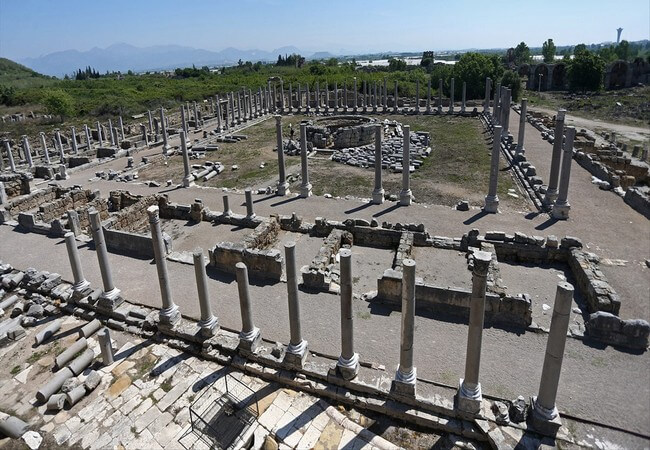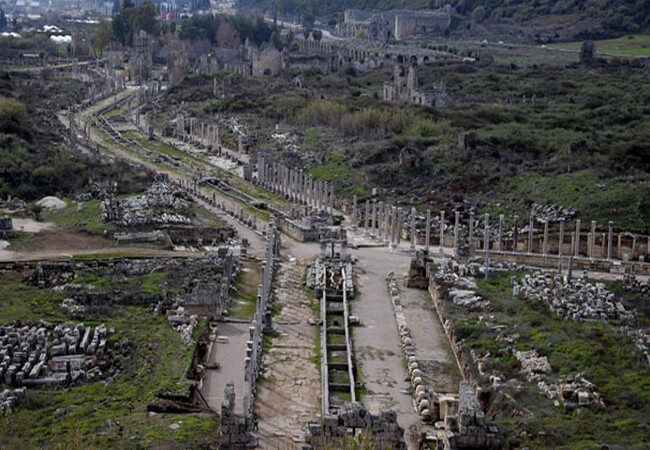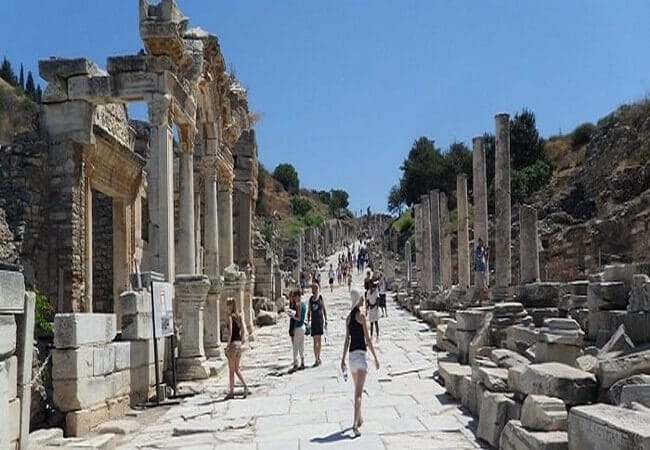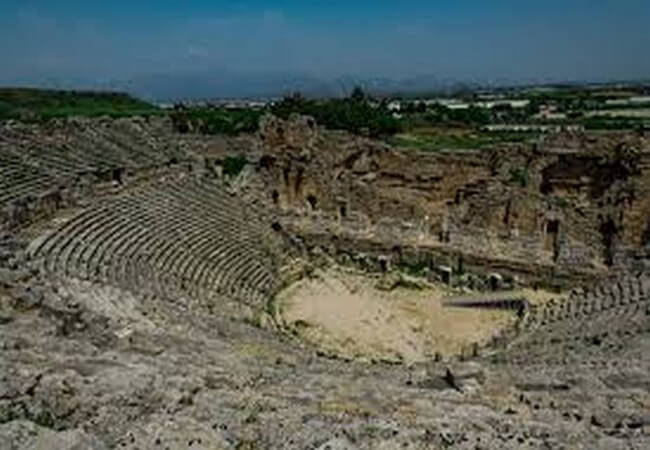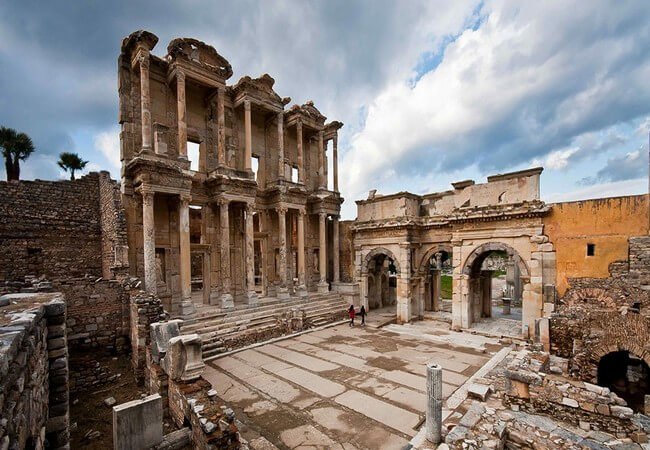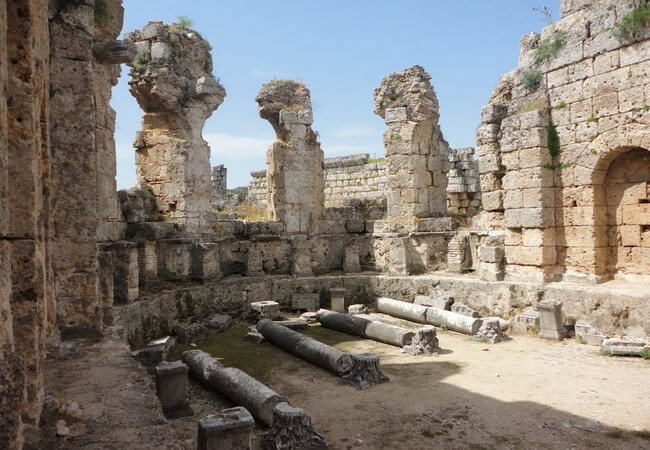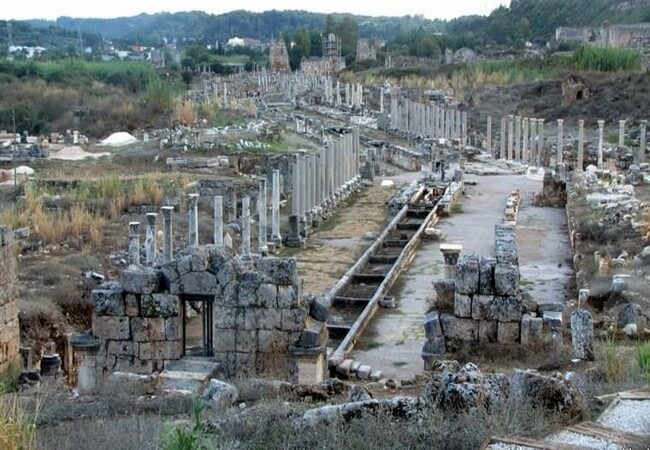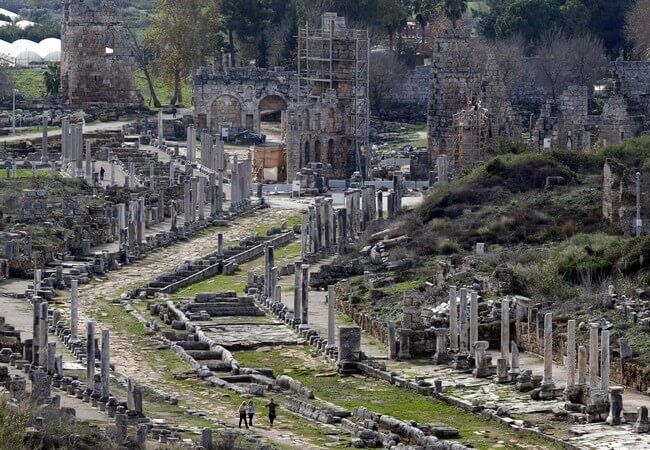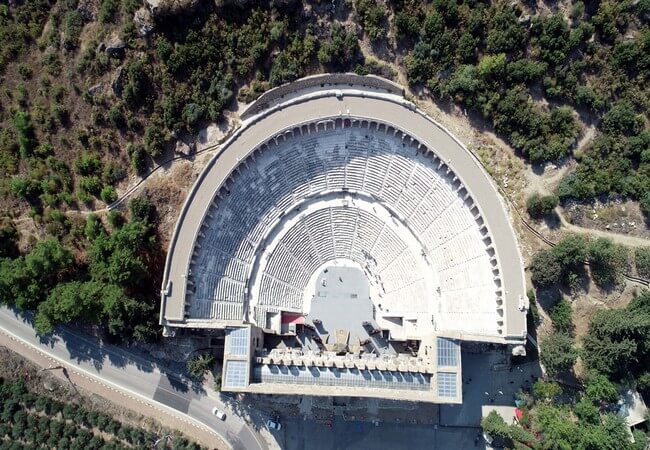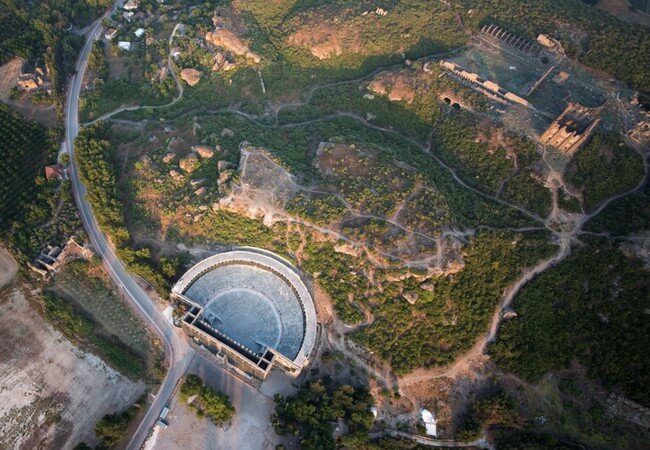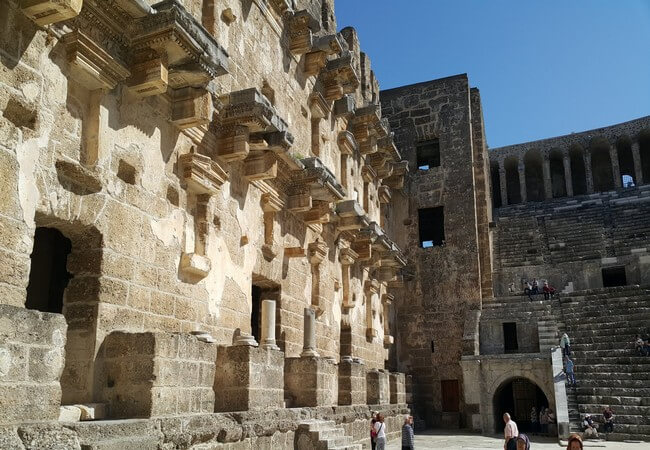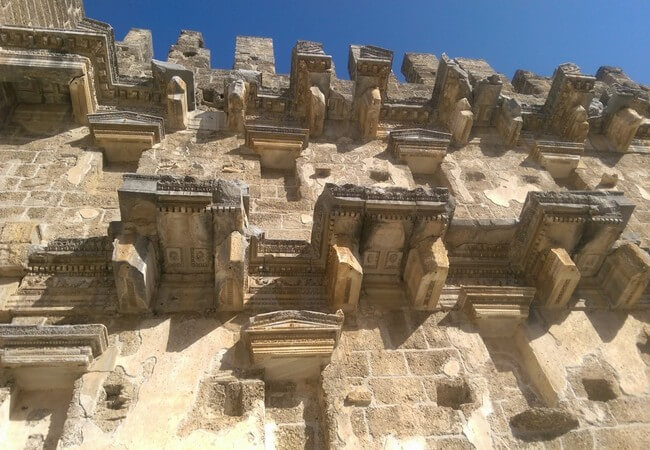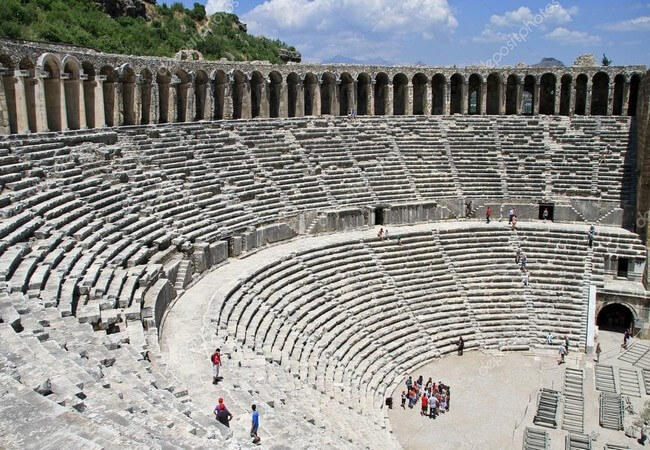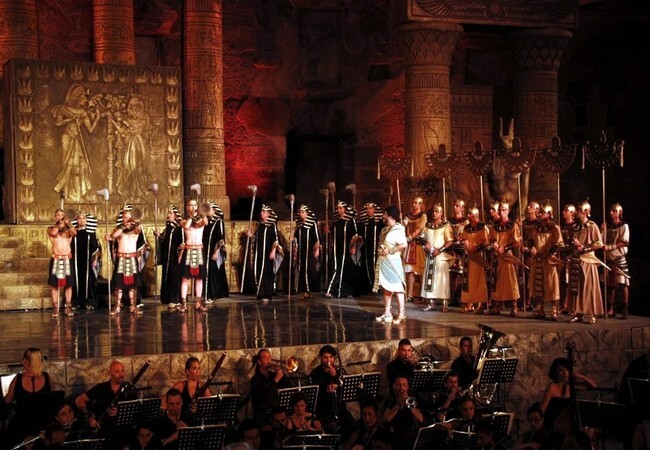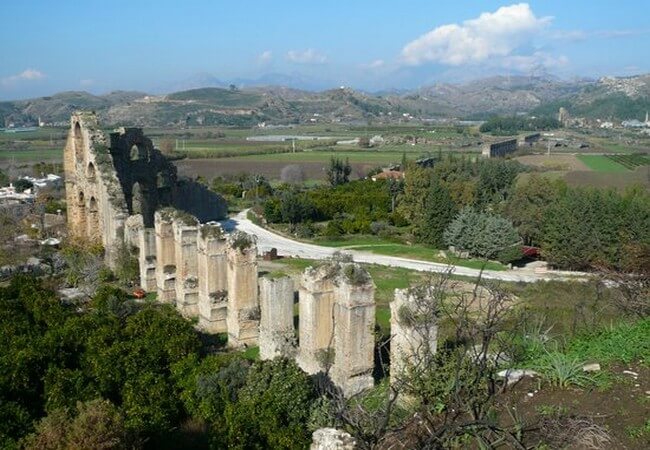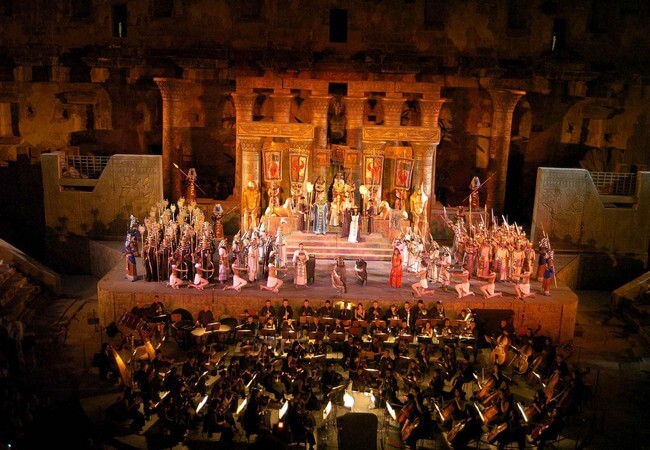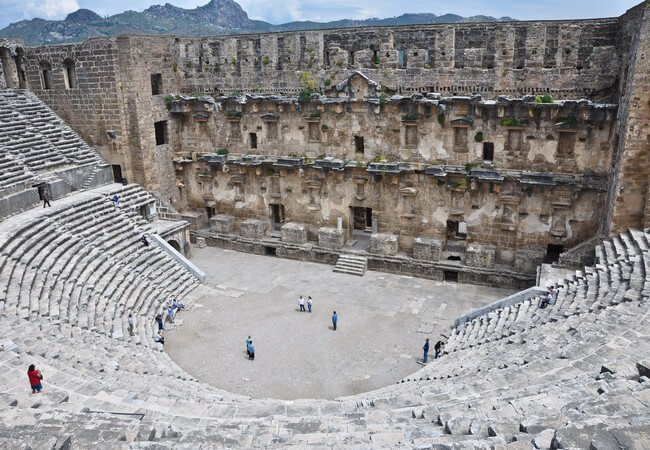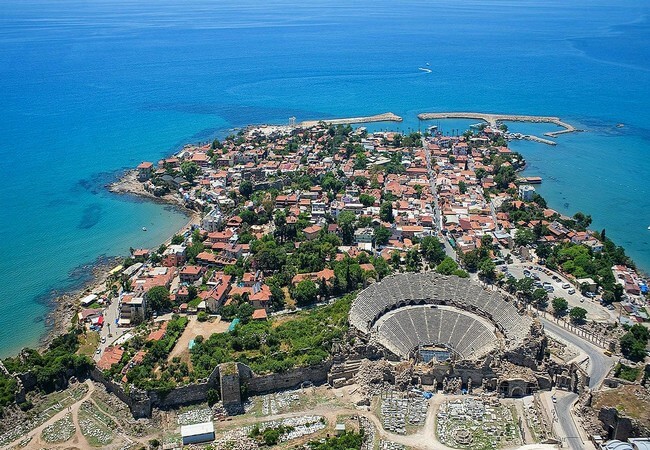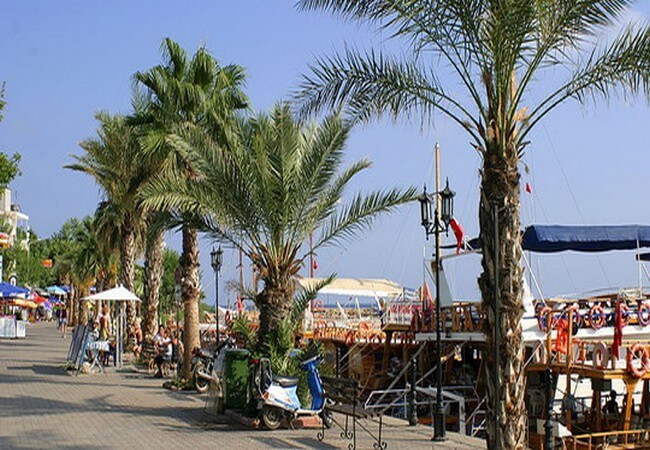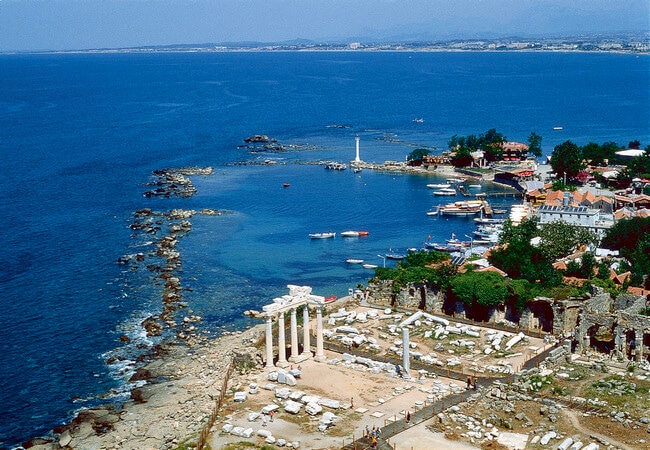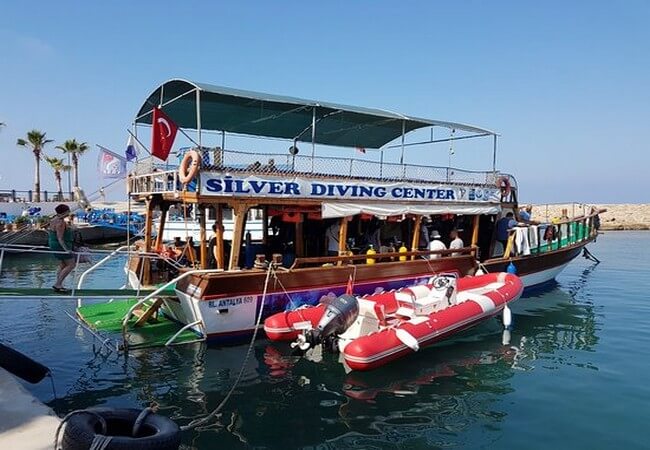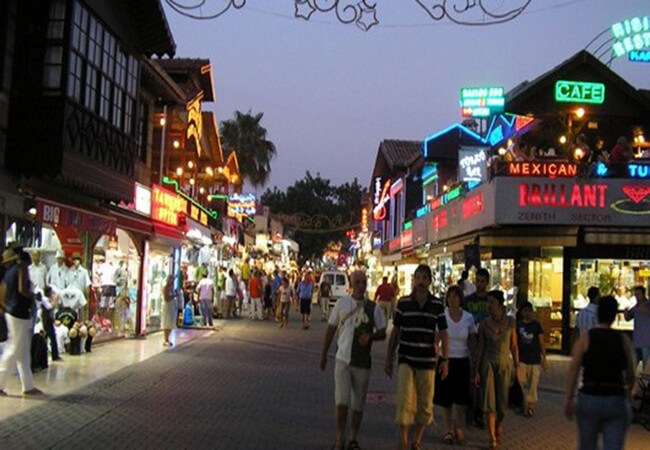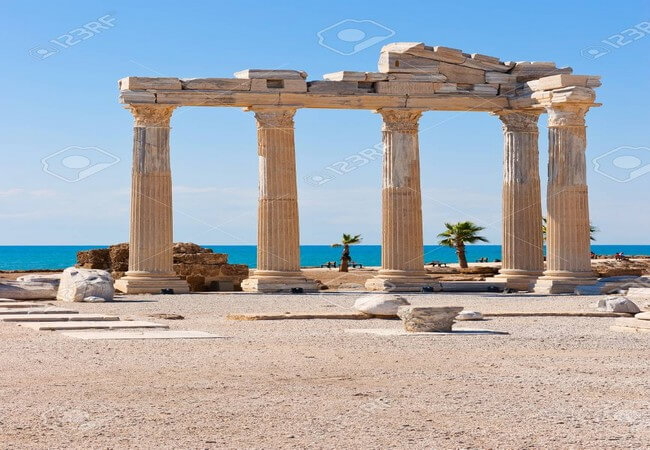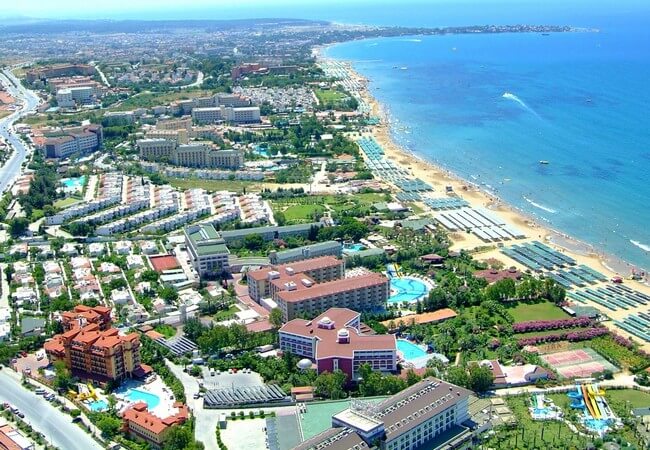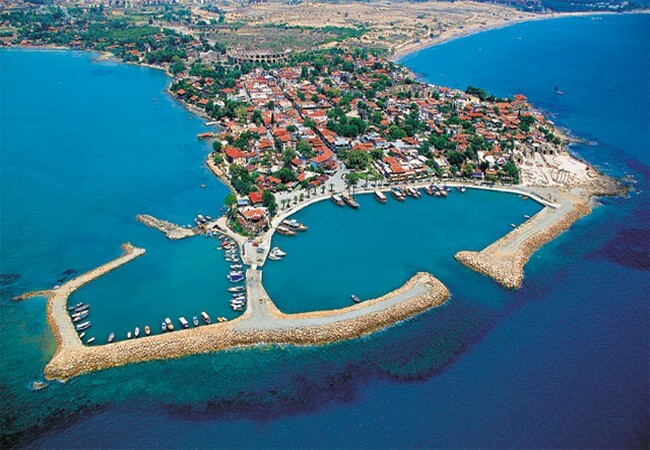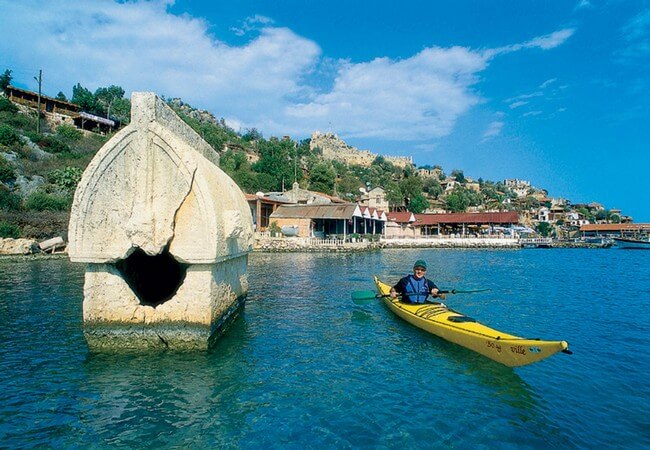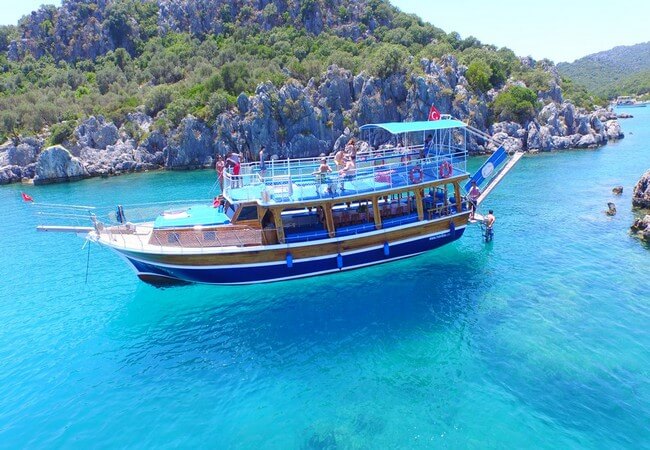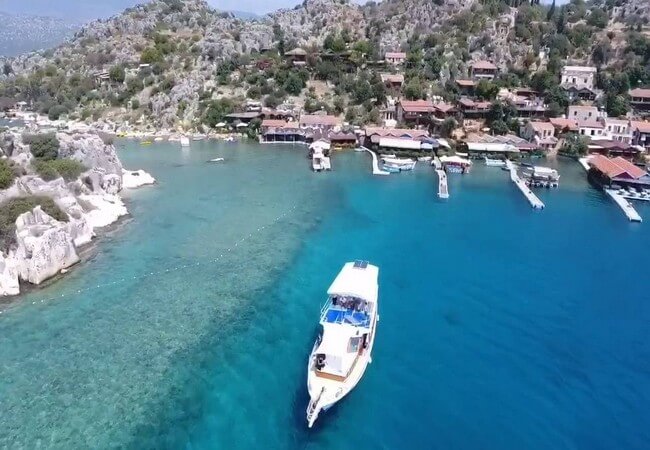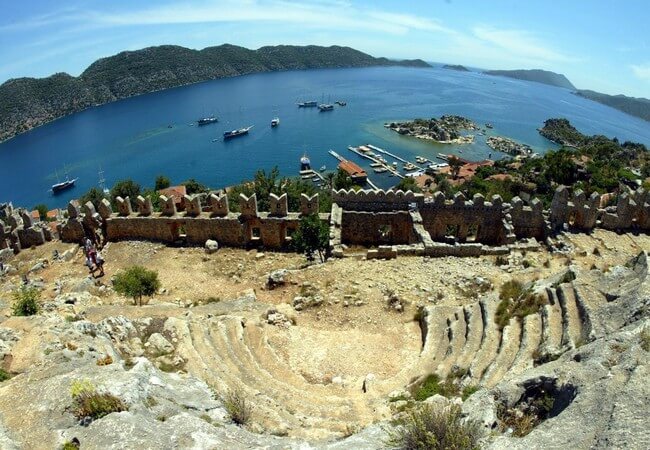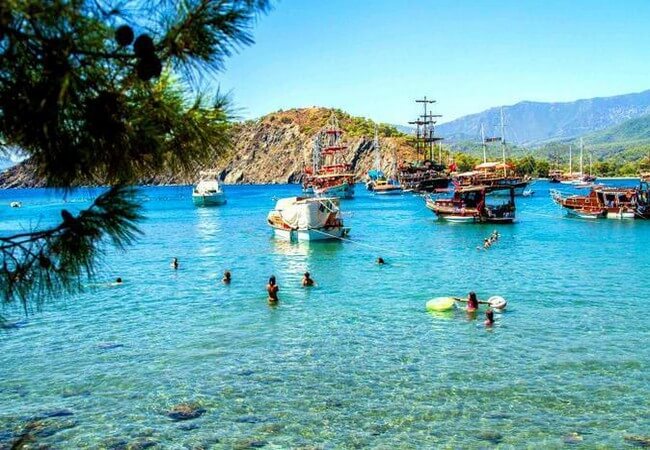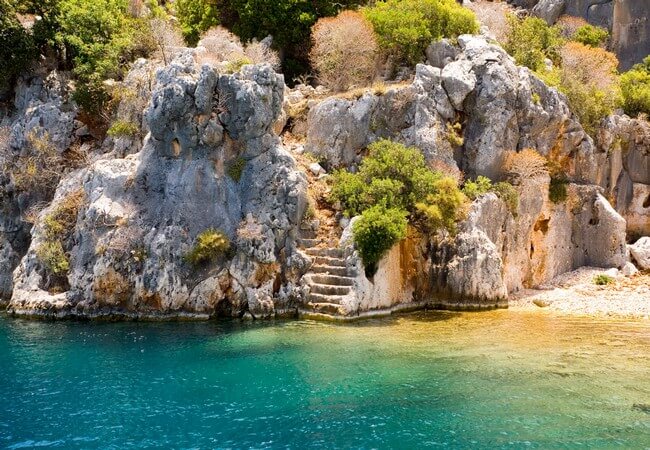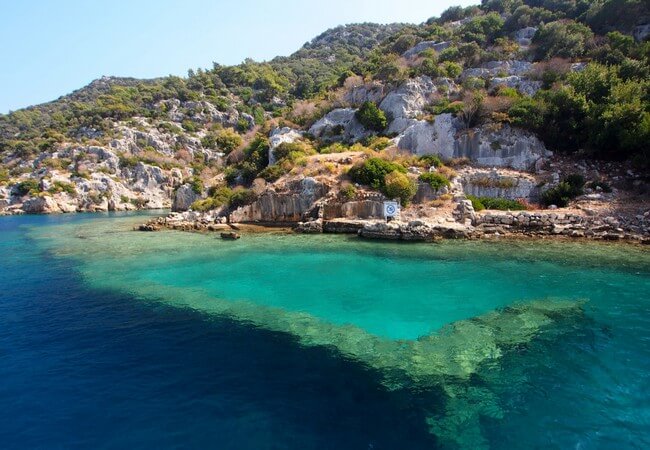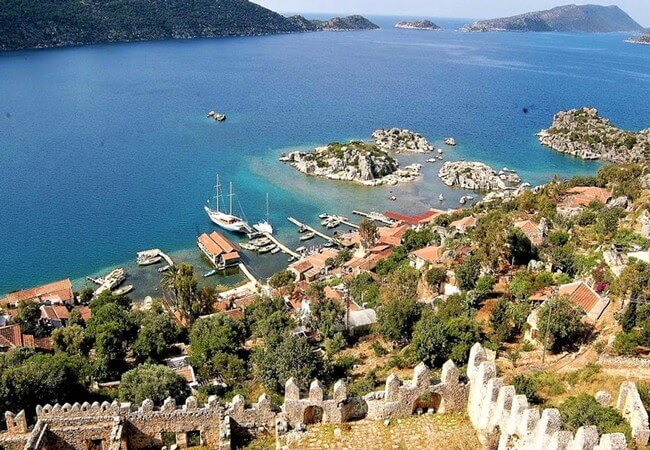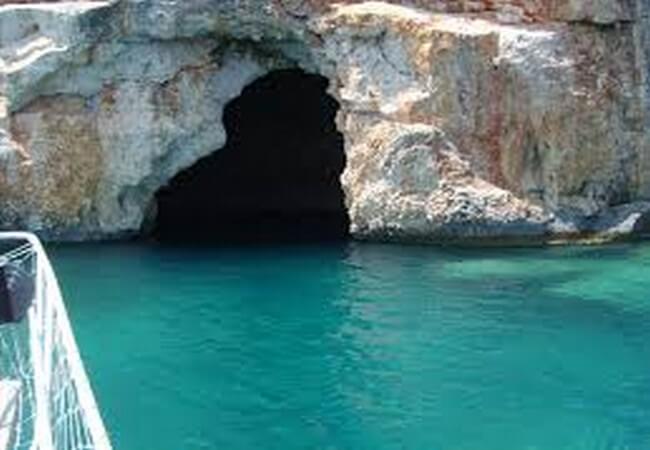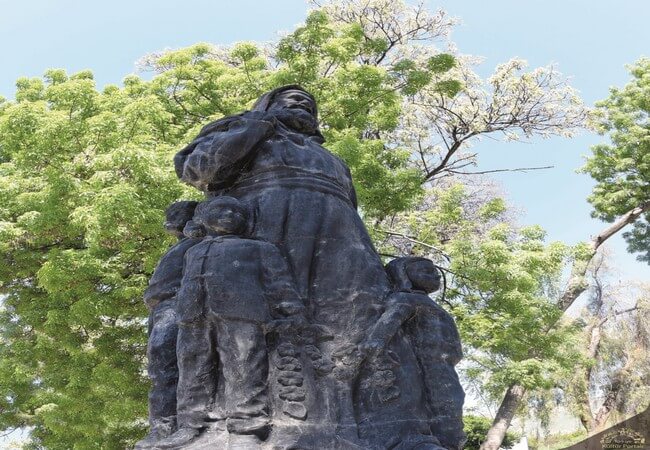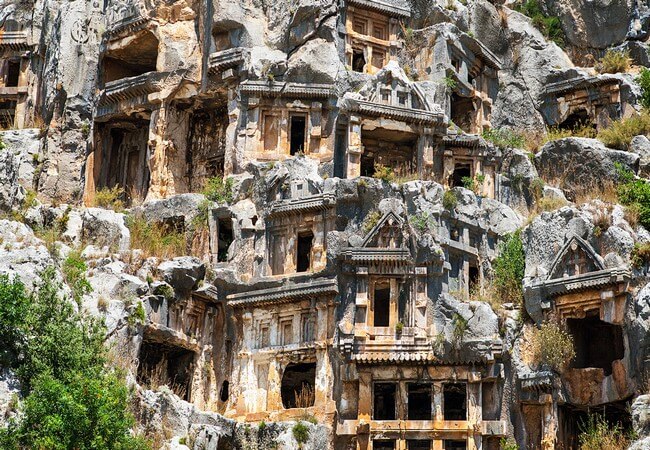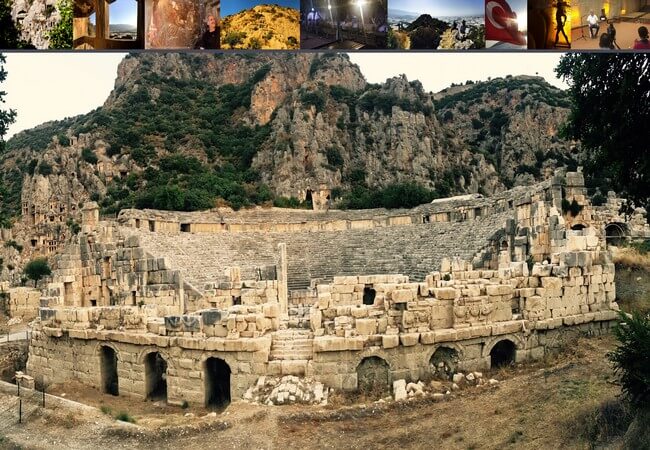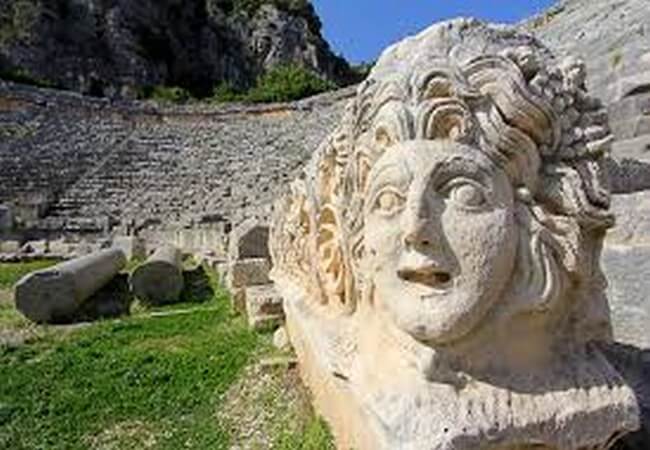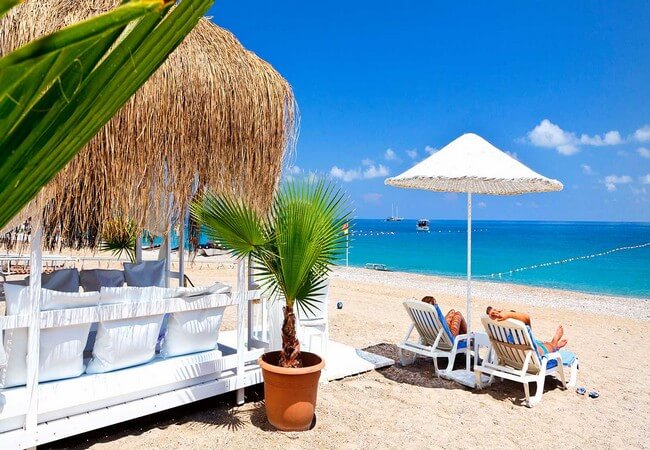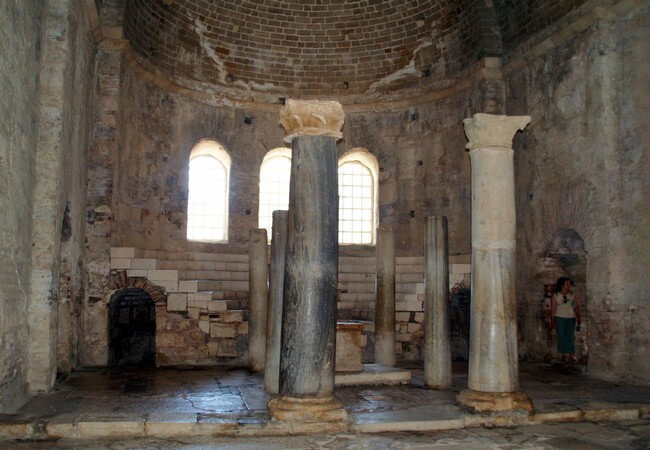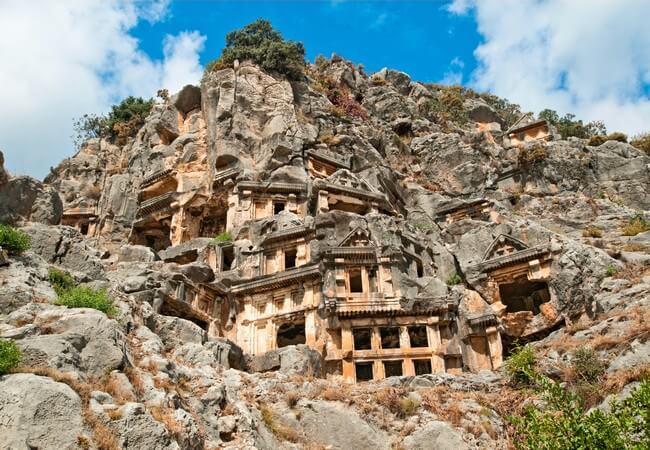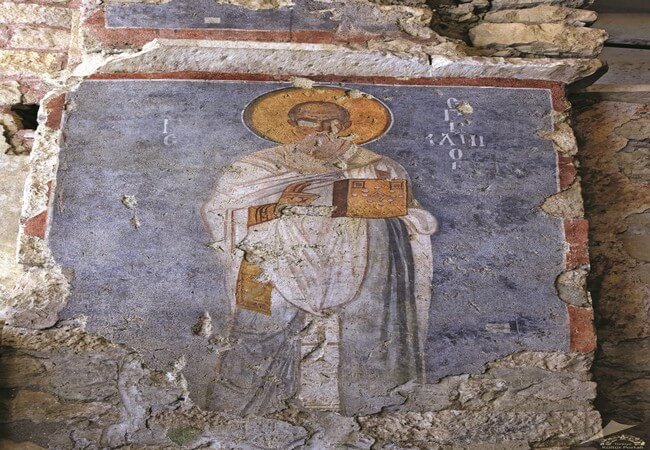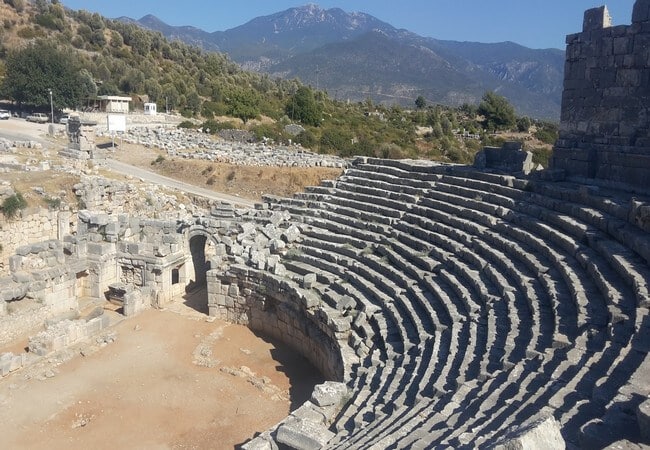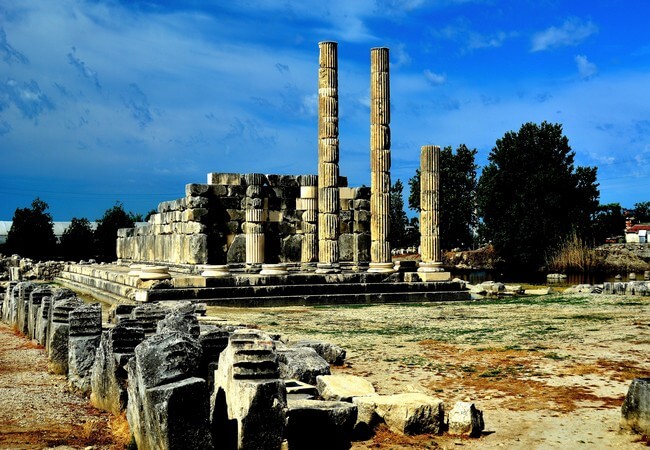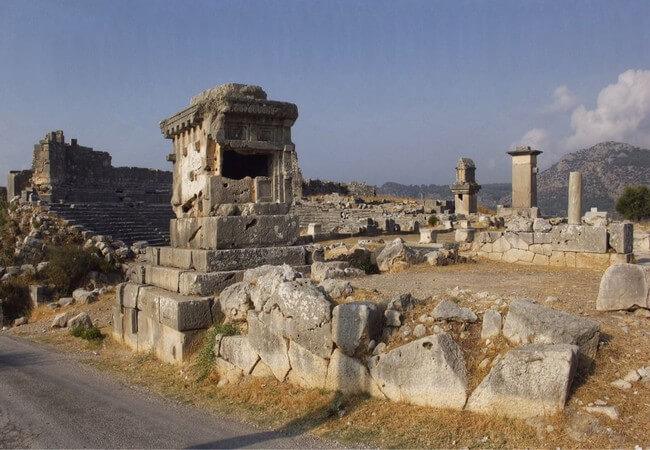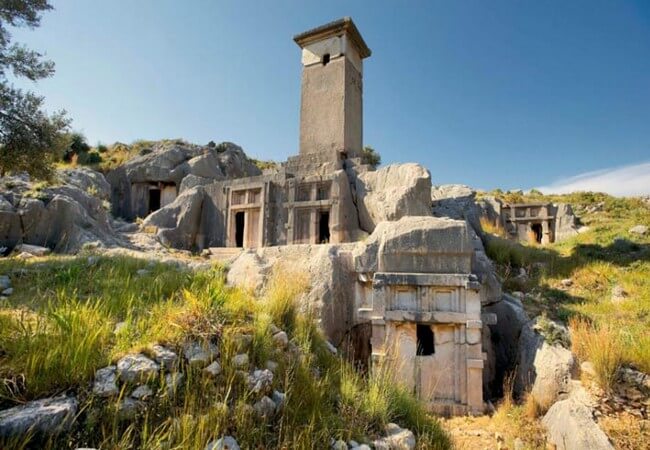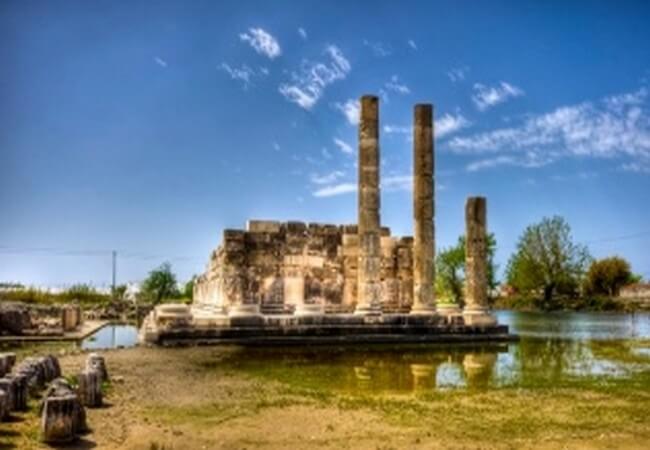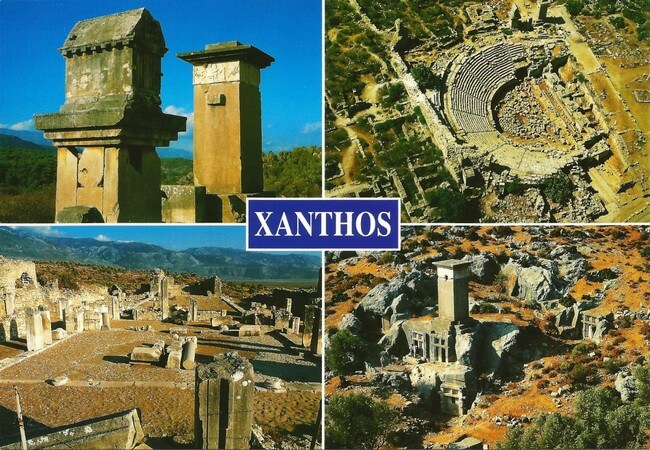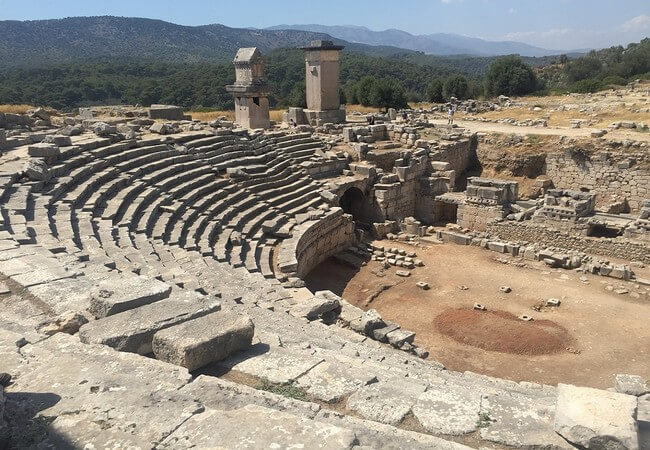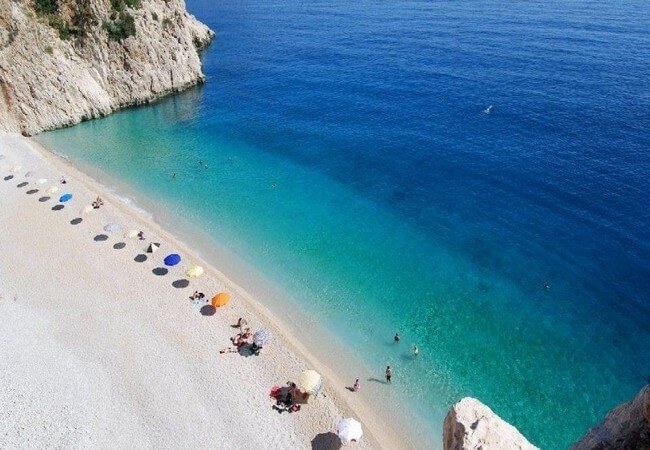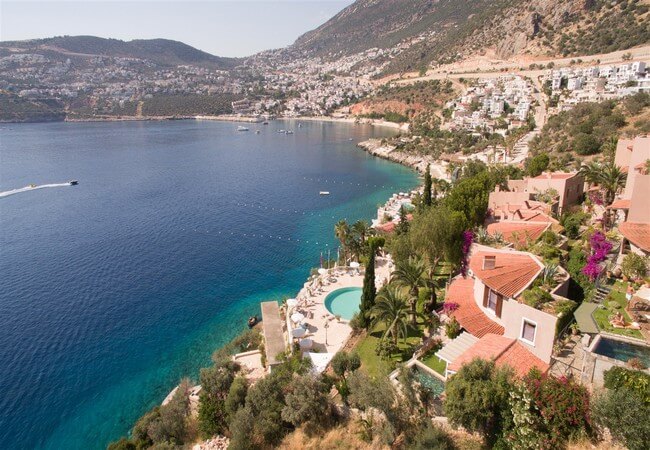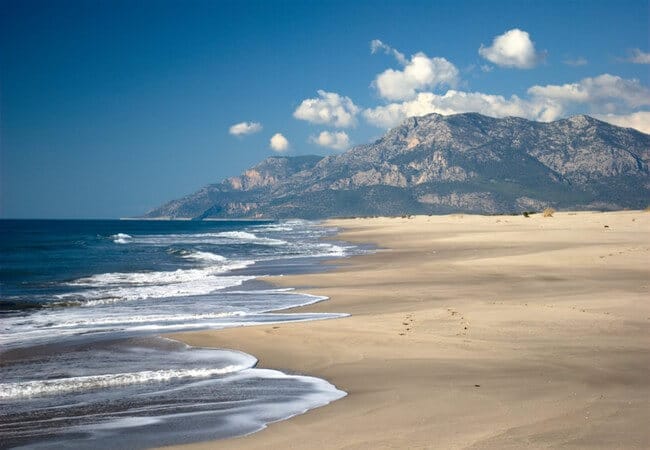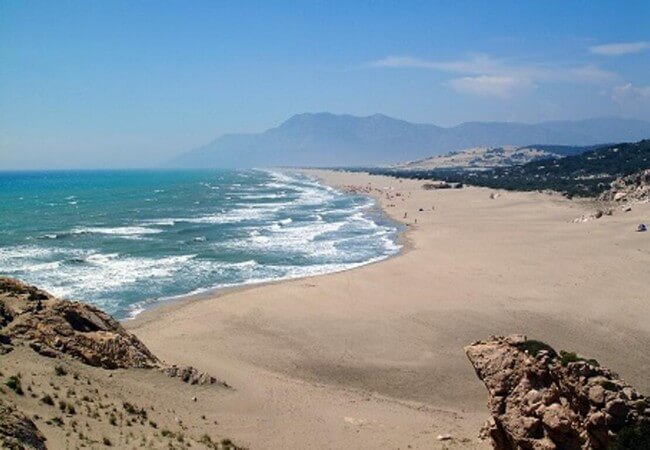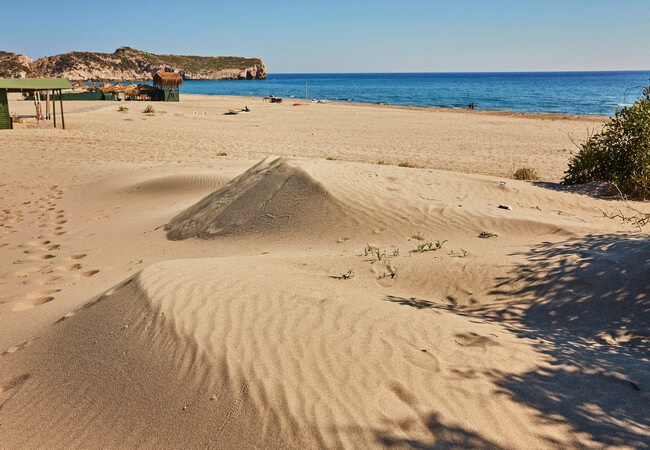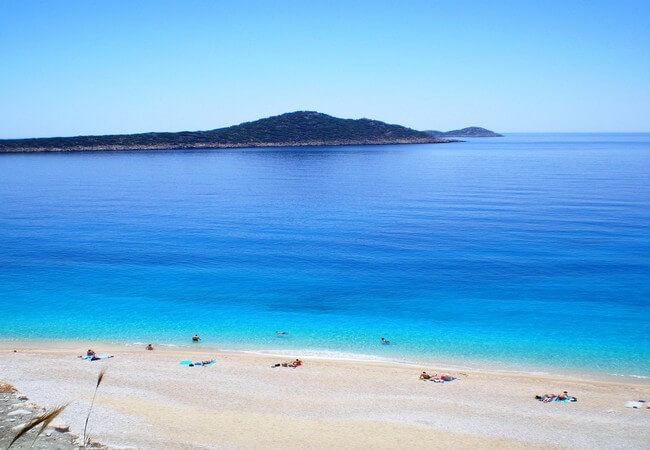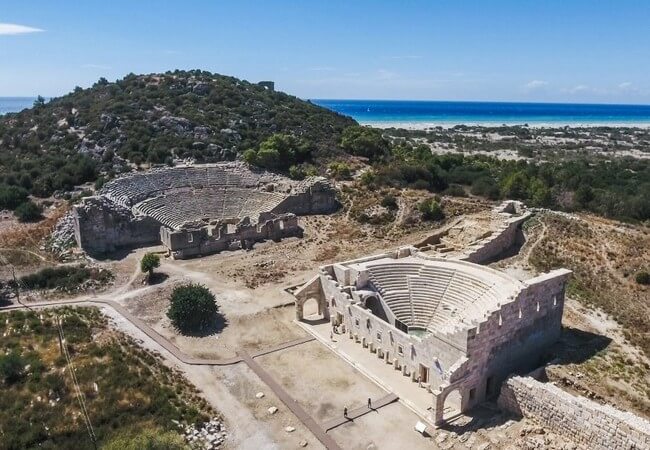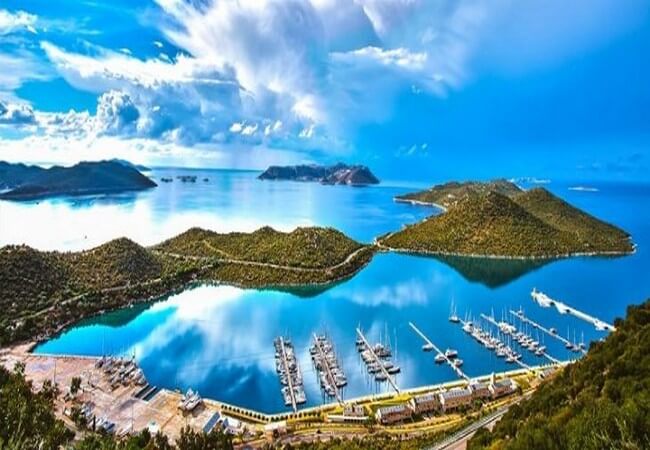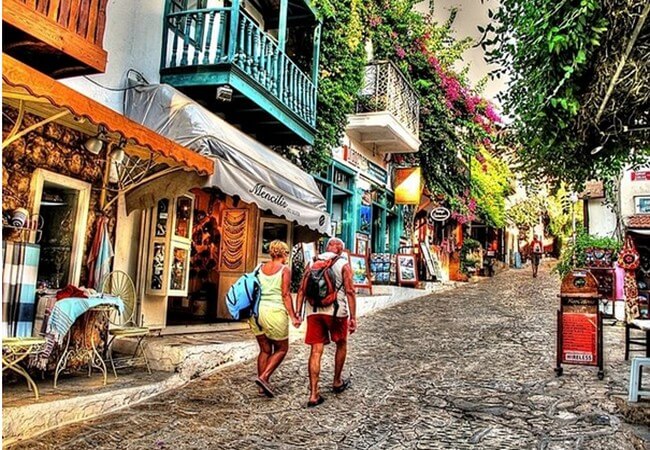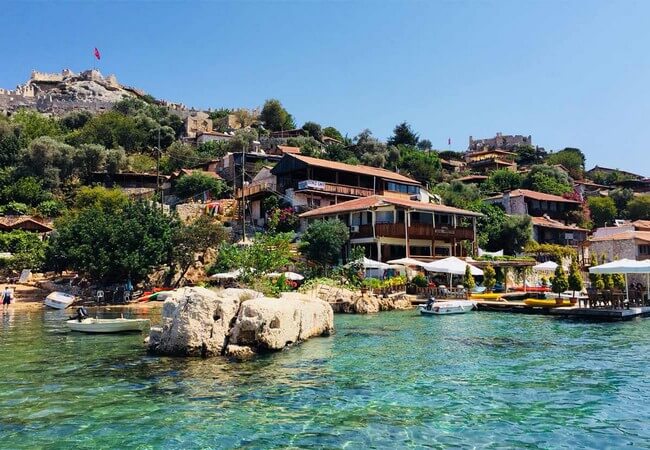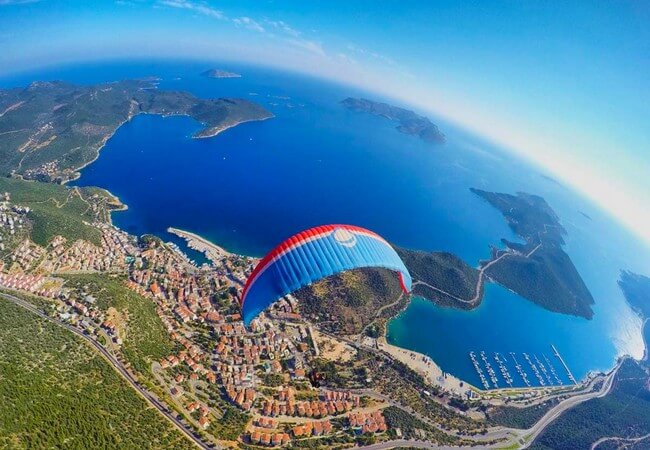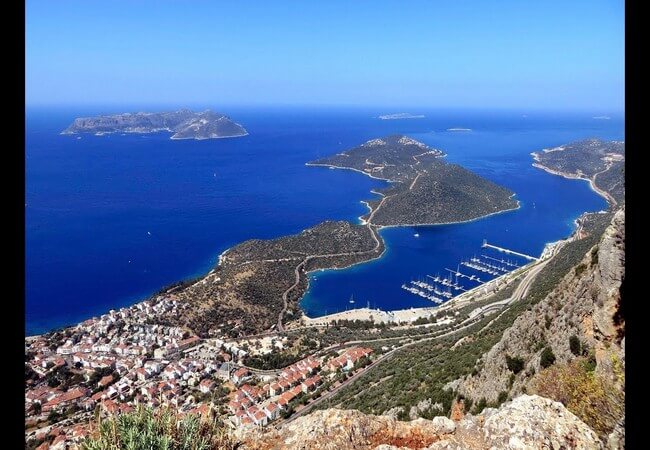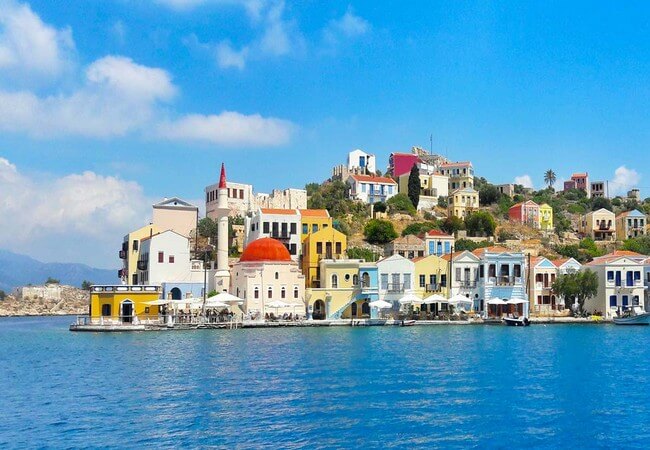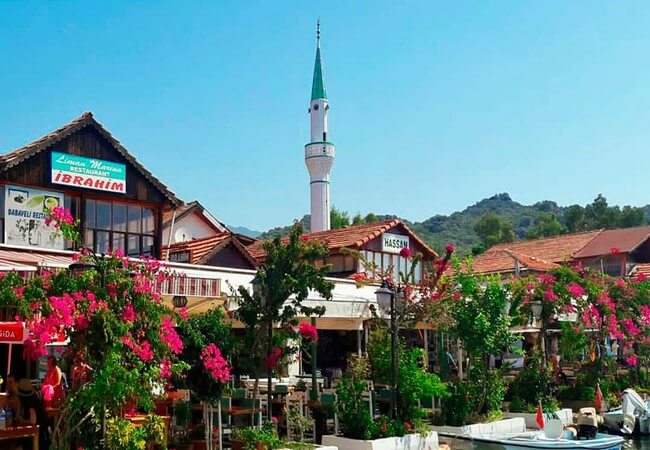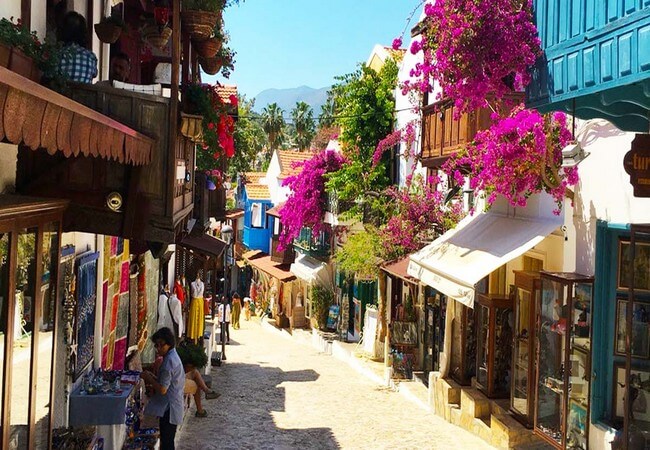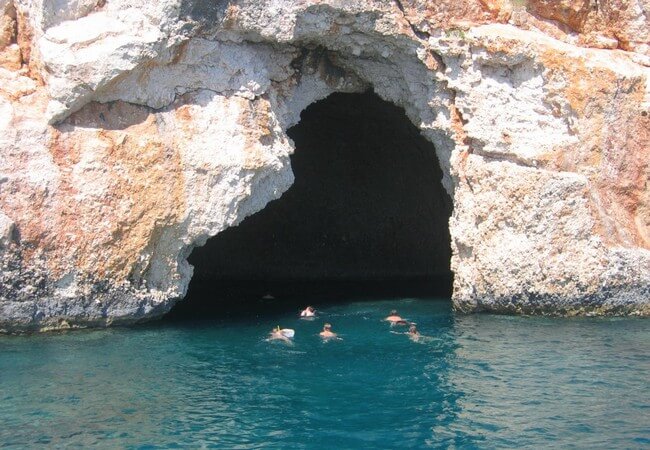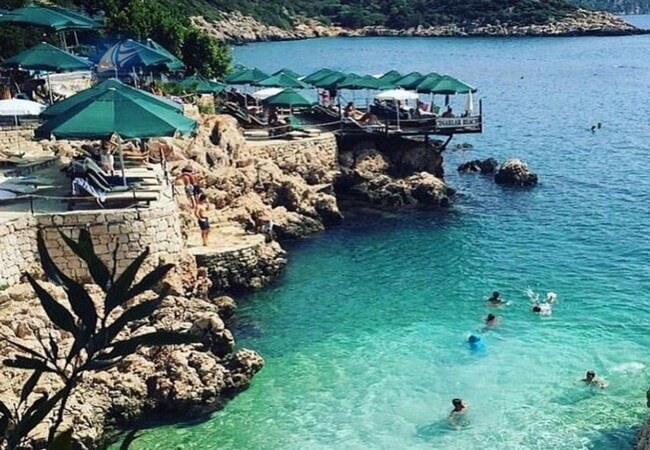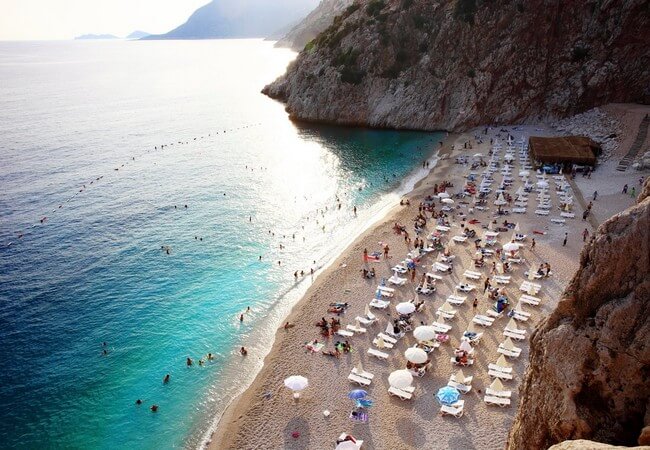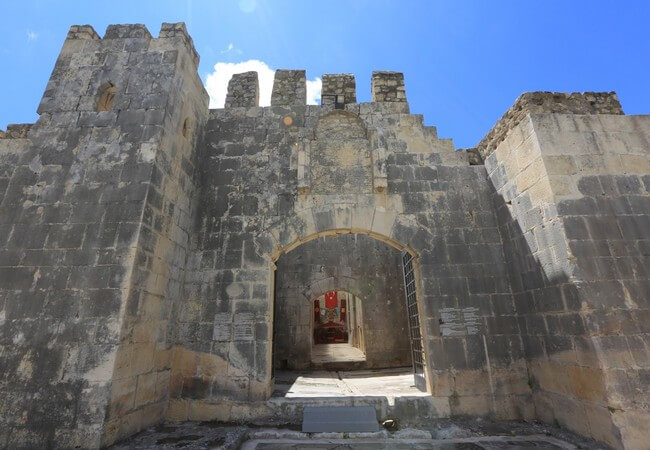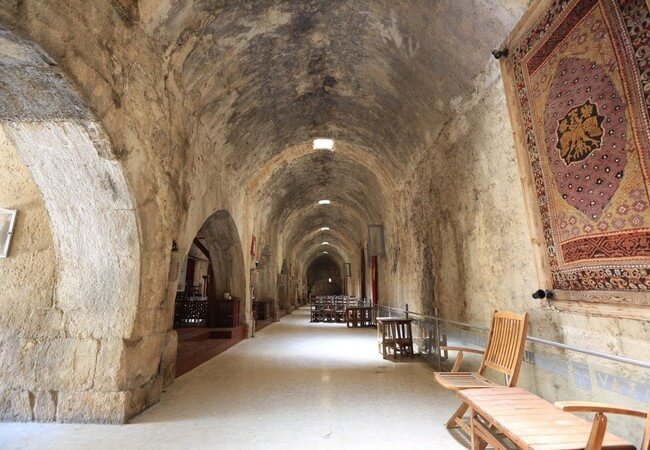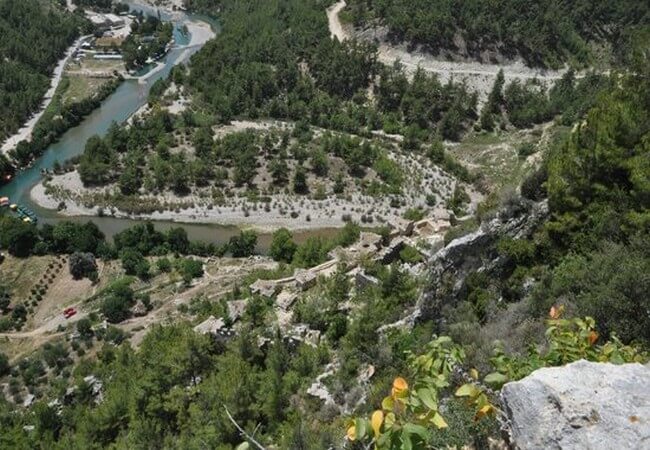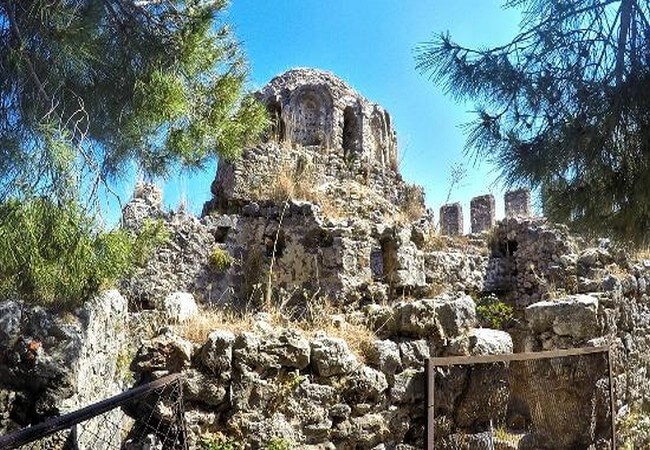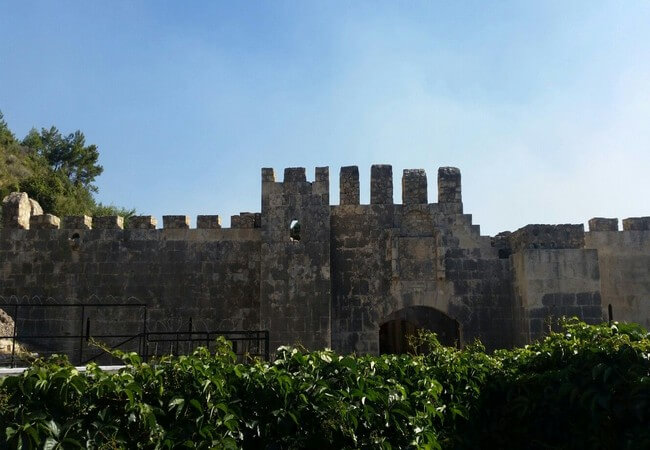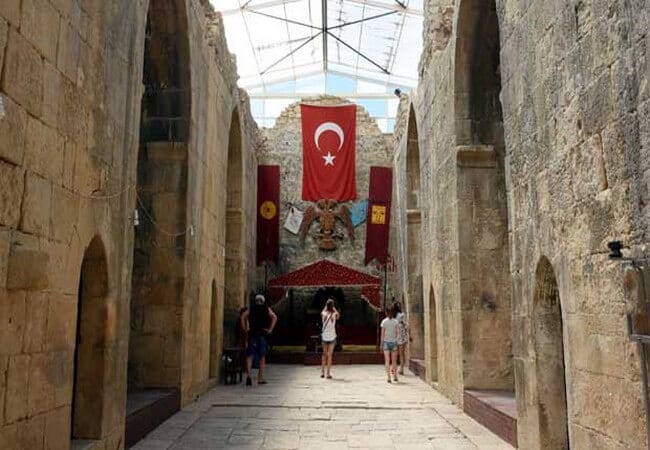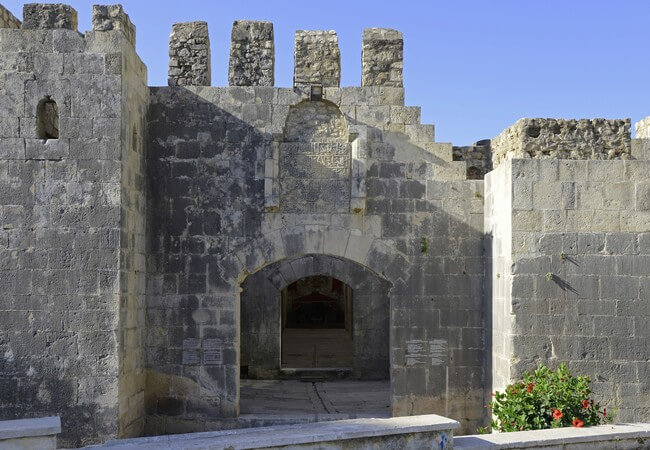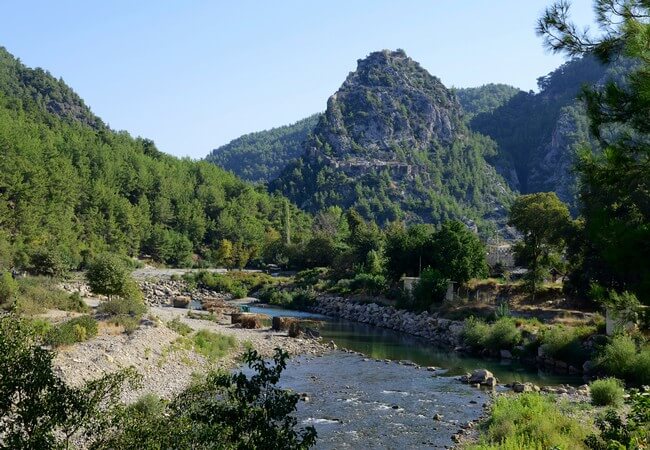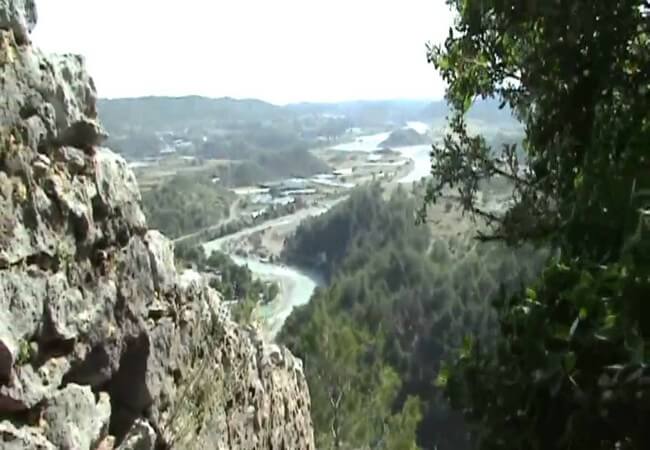ANTALYA
The city of Antalya stretches along the bay bearing its name, and is built at 39 meters
altitude on a rocky coastline. One is immediately struck by the Taurus mountains
rising to 3086 meters above this coastline, intersperesed withvalleys of varying sizes.
Land and sea everywhere meet the beaches stretching for miles or the steep cliffs.
The Taurus mountains against the blue backdrop of the sky, the precipices and
especially the caves close to the sea add another dimension to the beauty of the region.
Small and large streams emerging from the west side of the Taurus water the plains
on their journey to the Mediterranean. This translucent running water, cascading into
the sea at points along the coast, is another attractive sight.
The plant life of Antalya is extremely varied. Every kind of tropical plant can be
found along the coast. Visitors to Antalya are struck by the size attained by the
different species of cactus. When you reach the foothills of the Taurus, you will
see they are covered in the typical Mediterranean maquis, while the forests are full
of thriving oaks and pine trees. The coton and sesame plantations and citrus
and banana groves of the plains have a beauty of their own.
In Antalya the four seasons only appear on the calendar, as there is no real winter
here, so much so that when in 1985 for the first time in 60 years snow fell,
it was front page news.
OLYMPOS
It is located between Kemer and Adrasan. After passing Phaselis on the
Antalya- Kumluca road, signpost leading to Olympos and Çirali will be seen and
Olympos can be reached by following either route. Çirali is the name of the village
near Olympos, which was a port city established in the 2 nd century B.C.
and abandoned in the 6th century A.D. The famous myth of Bellerophontes fighting
the Chimera took place here. The antique city is on both sides of a beautiful valley.
A sandy beach is found where the town and the valley meet the sea, into which a
mountain stream flows. An hour’s walk from Olympos brings you to the natural
phenomenon of the Chimera. Known by the inhabitants as the “burning mountain”,
it is a result of escaping natural gas, whose flames have been shooting heavenwards
for centuries. The path to the Chimera is narrow and steep but is well marked.
PHASELIS
Phaselis is reached one km after turning left 57km along the Antalya-Kemer highway.
This was settled by the Rhodians in the 7th century B.C. and for many years was
claimed to be the most important port city of the eastern Lycian seaboard. Phaselis
has three harbours the north, the military protected and the south harbour, of which
the most important is the later. A 220-24 m wide avenue runs throughout the city.
The western end is the site of Hadrians Gate. On both sides of the avenue are
sidewalks and shops. Close to these can be seen the public places like baths,
theatre and agora. It is reached by road and also from the sea.
THERMESSOS
ermessos is perhaps the most interesting ancient city in Antalya region.
It is a Psidian city built at a height of 1050 meters in the Taurus Mountains.
Termessos constitutes an unusual synthesis of a large number of rare plants and
animal species, which are under protection in the Termessos National Park. When
turning off the Antalya-Burdur highway (11 km.) in the direction of Korkuteli,
the Termessos signpost will be seen 14 km. further on, and Termessos itself is a
further 9 km.
A visit to this site requires time and the stamina to walk uphill, because Termessos
is built entirely on a mountainous area difficult to access.
The inhabitants of Termessos were known as the Solyms but unlike those of other cities
of the time they did not come from the sea and were entirely of Anatolian origin.
What is known of their history commences principally at the time that Alexander the
Great surrounded the city in 333 B.C., which he likened to an eagle’s nest and failed
to conquer. Termessos, after a gradual decline, was finally abandoned in the 5th
century A.D. Some of the remains found there are the walls, the Hadrian’s triumphal
arch, the cisterns, the theater, the gymnasium, the agora, the odeon and the heroon.
Among the tombs which are scattered far and wide can be seen those of Alcates,
Agatemeros and the Lion decorated sarcophagi, which are extraordinary.
PERGE
This city was built 18km east of Antalya between the Düden and Aksu streams.
Is reached along the Antalya-Alanya highway, turning north at Aksu. As it was not
on the coast, it was not subjected to raids by pirates and therefore continued its
progress without interruption. It was settled in 1200 B.C. In 332 B.C. Perge,
like Side, reached an agreement with Alexander and thus did not go to war or
suffer the usul ravages. It lived through the Hellenistic, Roman and Byzantine epochs.
Its 15,000 spectator theatre was built in the 2nd century A.D. and the nearby stadium
could hold 12000. With the exception of the Aphrodisias stadium, it is the best
preserved in Anatolia. There are 30 rooms, believed to have been used as shops,
underneath the stadium seats. A great many statues and other valuable items have
been unearthed in recent digs, of which many are in the Antalya Museum. Some of the
things worth seeing in Perge are the gates, agora, nymphaeum, the pillared streets,
sarcophagi, basilica and acropolis.
ASPENDOS
After passing Serik on the Antalya-Alanya highway, you turn north and continue for
4 km. Aspendos dates back to the 5th century B.C. The theatre, which was built in
the 2nd century A.D., was periodically repaired by the Seljuks who used it as a
caravanserai. It is one of the best preserved theatres to be found today. Allowing
0.50 m per seat, the theatre holds 17000 spectators, with an additional for 500 in
the orchestra. Today it is used for concerts, festivals and grease wrestling events.
In addition to the theatre the agora, basilica, nymphaeum and 15 km of aqueducts are
to be seen. The pressured aqueduct system is a feat of engineering from the Roman period.
SIDE
Side is to be reached by turning right 3 km before Manavgat on the Antalya- Alanya
highway. The exact date of its founding is not known. In the language of Anatolia,
“Side” means Pomegranate. From inscriptions it appears that Side dates back to the
Hittites. The city was constructed on a peninsula and was a Hellenistic and Roman town,
protected by city and sea walls. One’s attention is particularly drawn to the city gates
and walls, as well as the many remains of aqueducts which brought water from the
Tauros mountain foothills and surrounding country. The old baths have been restored
and turned into a museum, in which are exhibited some of the statues and art
treasures found in Side. One of its most important buildings is its 15000 spectator
theatre. The difference between this Roman theatre and other antique theatres in the
region is that it is not built against a hillside. The 2 storey theatre, built on
a series of arches, is 20 m high. The orchestra and stage are in a state of ruin.
Rainwater channels run under the theatre. Side has colonnaded streets, a triumphal
arch, harbour, baths, fountains, cisterns, aquaducts, temples and a agora.
KEKOVA
After leaving Kas one sails past Uluburun and sets a course for Kekova, a spot that is
like heaven on earth. One first encounters the Sicak peninsula at the end of which
are two islands: Toprakada and Karaada. Kekova island stretches out from here and it
is because of this island that the whole area is called Kekova. Passing among the
islands and arriving at Kekova, the safest anchorage is Üçagiz, which is a good,
all-round harbor.people of different religions and beliefs for peace,
friendship and brotherhood.
MYRA
Situated between Finike and Kas, Myra is 25 kms. from Finike and 48 kms. from Kas.
It was one of the most important cities among the other six Lycian cities. It was
settled in the 5th century B.C. Although it was originally a coastal town, it has
retreated from the sea because of the alluvium from the Demre stream. It was
abandoned in the 9th century A.D. after the Arab invasion. The rock tombs,
the theatre and St. Nicholas Church have survived to make it a place worth visiting.
St. Nicholas, born in 245 A.D. in Patara near Fethiye (known variously as St.Nicholas,
Father Christmas, Santa Claus, Heilige Nikolaus and Pere Noel) died in 363 A.D.,
having spent his life in Anatolia. Son of a wealthy family and of good education,
he devoted himself to mankind. Because of the assistance he rendered to those around
him, St. Nicholas was known as the protector of children and sailors, and to this day
the legend of Father Christmas has continued to live as vividly as ever.
As the Bishop of Demre, by his religious and social work, he solved the problems of
the people in a humane way. After he died he was buried in Demre and a church was
built there for his memory. In 108 Italian pirates stole some of his bones and took
them to Bari. In their haste they left a few behind and these are today on display
in the Antalya Museum. In a number of countries the death of St. Nicholas is
commemorated by special ceremonies and by giving presents to children, and in
fact it takes on the significance of a new year.
It was in the years 1951-55 that it was realized St. Nicholas was Santa Claus
(or Father Christmas) and this drew a lot of attention to Turkey, with articles
in the papers and items on the radio, and in 1955 a Father Christmas stamp was issued.
After that date celebrations for Father Christmas started to be held regularly.
The first Father Christmas symposium ever held in Antalya was between
5-7 December 1983. This is now held annually and is attended by religious and
scientific people from all over the world. In these symposiums, in keeping with
Anatolia’s St. Nicholas’ love for humanity, a call is made to
XANTHOS
This is the oldest and the largest city of the mountain province of Lycia, settled
in the valley of the Xanthos river. Until the Persian invasion it was an independent
state. When the people of Xanthos,who had bravely tried to defend their city,
realized that they could not repulse the invasion, they first killed their women
committed mass suicide by throwing themselves into the flames. About 80 surviving
families and people who immigrated there rebuilt the city, but a fire which broke
out about 100 years later razed it to the ground. In spite of this, the city was
again rebuilt and, as a result of establishing good relations with the west,
was considered as an important centre. However, Xanthos again met with an unfortunate
end. As a result of resisting the taxes the Athenians wanted to impose on them in 429
B.C., the city was largely destroyed and the inhabitants were drawn into a war.
And thus Xanthos became “a city of disasters”. The city itself consists of the
Lycian acropolis and the parts remaining outside it, as well as the Roman acropolis.
The most interesting building is the Roman theatre and the edifices of the theatre’s
western shoreline. Of these the most famous is the Harpy Monument, which is a family
sarcophagus situated on a rock. The original of this relief-decorated sarcophagus
is in the British Museum, and a very good copy of this is in its place. Close by
can be seen very interesting Lycian sarcophagi from the 6th and 1st centuries B.C.
PATARA
At about 10 kms. beyond Kalkan on the Kalkan-Fethiye highway you turn south and
continue 10 kms. along the road to Patara. The painted ceramics found in the
acropolis prove that the city existed in the 5th century B.C. Patara opened its
doors to Alexander the Great, thereby earning the status of an important harbour city,
in addition to having been the birthplace of St. Nicholas. The triple gateway
through which one enters Patara is thought to have been built in 100 A.D. One of
its most important edifices is its theatre which is now buried in sand.
KAŞ
oday’s Kas is a coastal city of the Lycians. “Phellos” is the Greek word for “stony
place” and this name is very well suited to Kas. Its well preserved rock tombs and
theater are well worth seeing. Kas today is a small and charming coastal resort.
This is reached by sea from Ucagiz. The beauty of Simena lies in its blending of
history, sea and sun. Here, one is fascinated by the remains of ancient civilizations
lying under the blue and translucent waters of the Mediterranean. Kale’s history
dates back to the Lycian era. Roman and later eras are piled on top of each other.
The theatre carved out of the rocks is one of the smallest of Lycia. The walls were
built in Roman times but it is thought that additions were made in later eras.
ALARAHAN
Alarahan, known as the Pamphilia region is within the frontier of Antalya province
of Alanya district, Okurcalar city, Çakkallar village.30 km from Alanya
(towards Antalya ) there is a turnoff to Alarahan.You will travel for 9 km after
this turnoff from the sea towards the forest passing little settlement areas,
and arrive to the region which has given it’s name “Historic Alarahan.”
Alarahan, one of Turkey’s limited “historic places to gain function” with it’s
naturel surrounding Alara Castle and Alara Creek, forms a unique “museum of nature
and history.”Alarahan of Silk Way was built in A.D 1231 by Seljuk Sultan I. Alaaddin
Keykubat. With living places suitable for the stay of Sultan, it’s architecture and
functional places, Khan is accepted as the most functional among the Anatolia Khans.
Khan is the only touristic place in the region in which you can see the life styles
of the Seljuk Turks, in Anatolia many centuries ago and an opportunity for the
visitors to get acquainted with our cultural elements and to keep them alive.
770 years old Khan which wasn’t in a ruined condition until two years ago, has become
a “living and serving place “ as it was in the past, due to a restoration work
conducted with total devotion to keep it original, between 1998-2000. (kaynak Betuyap)
